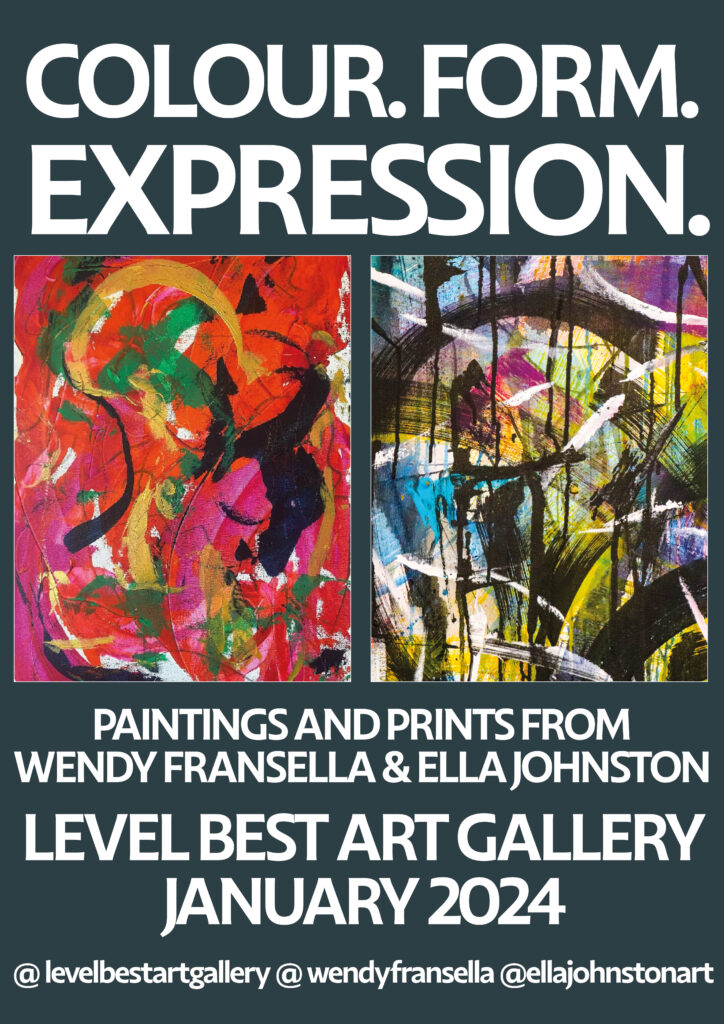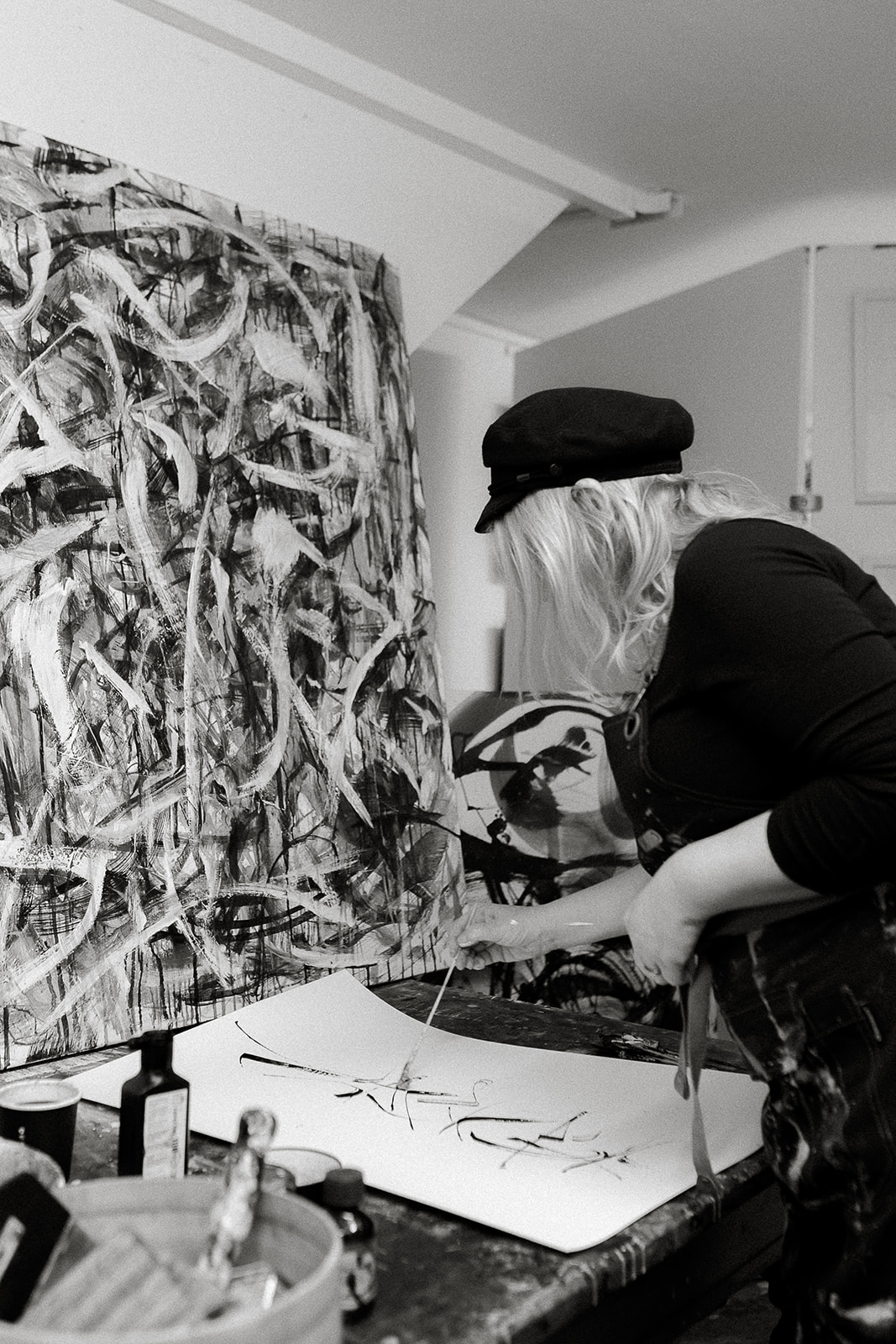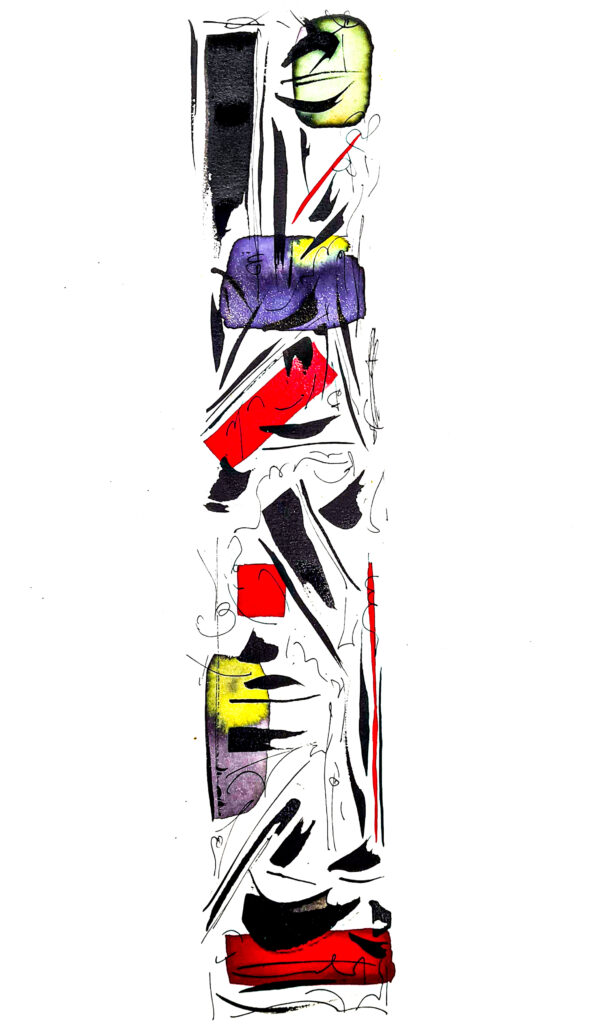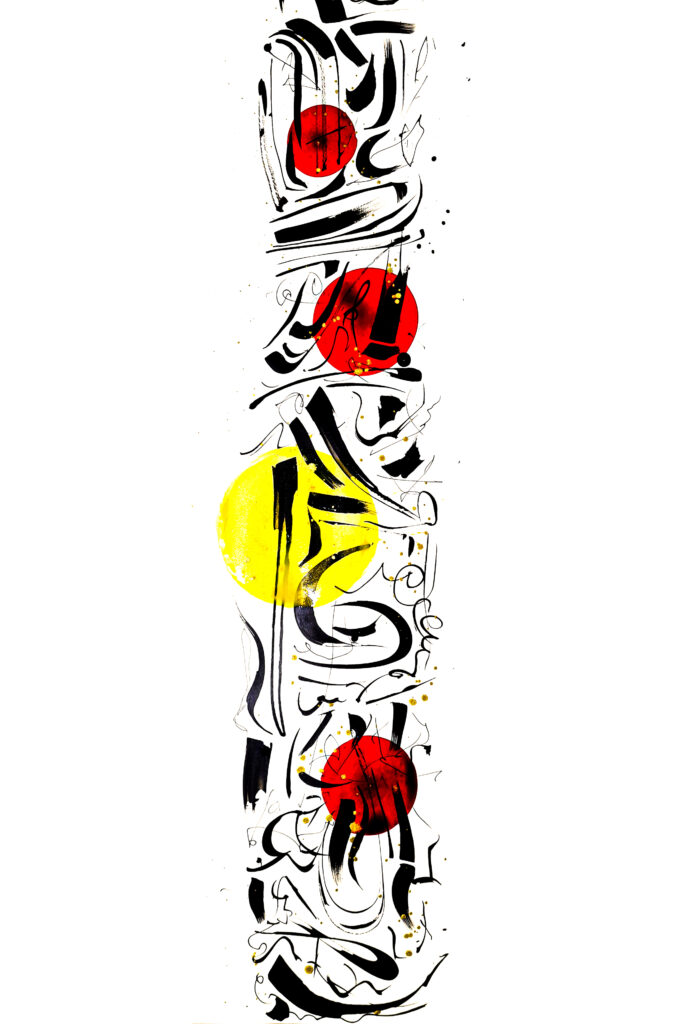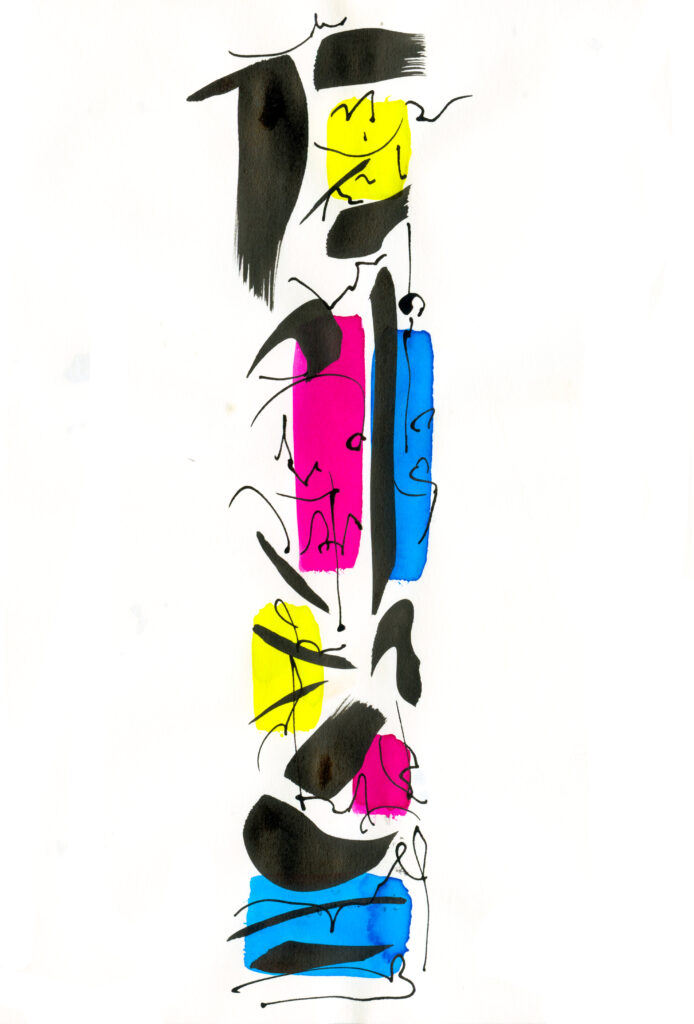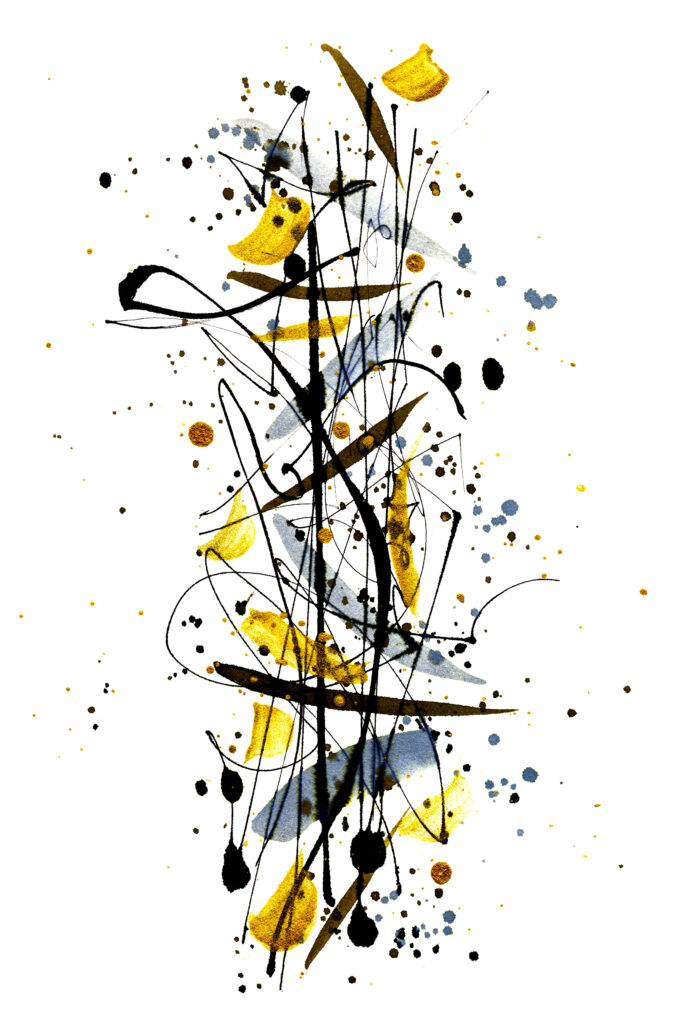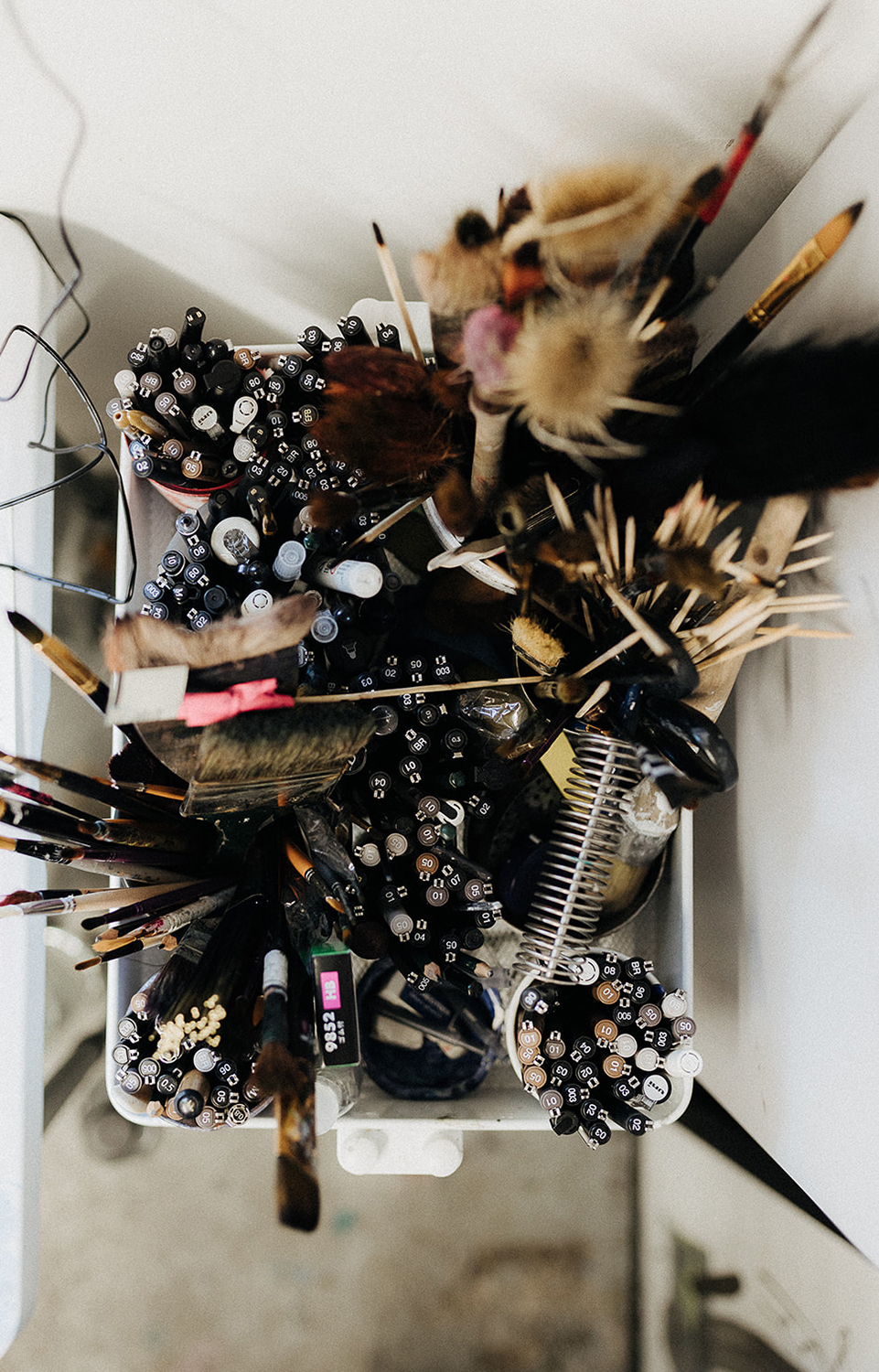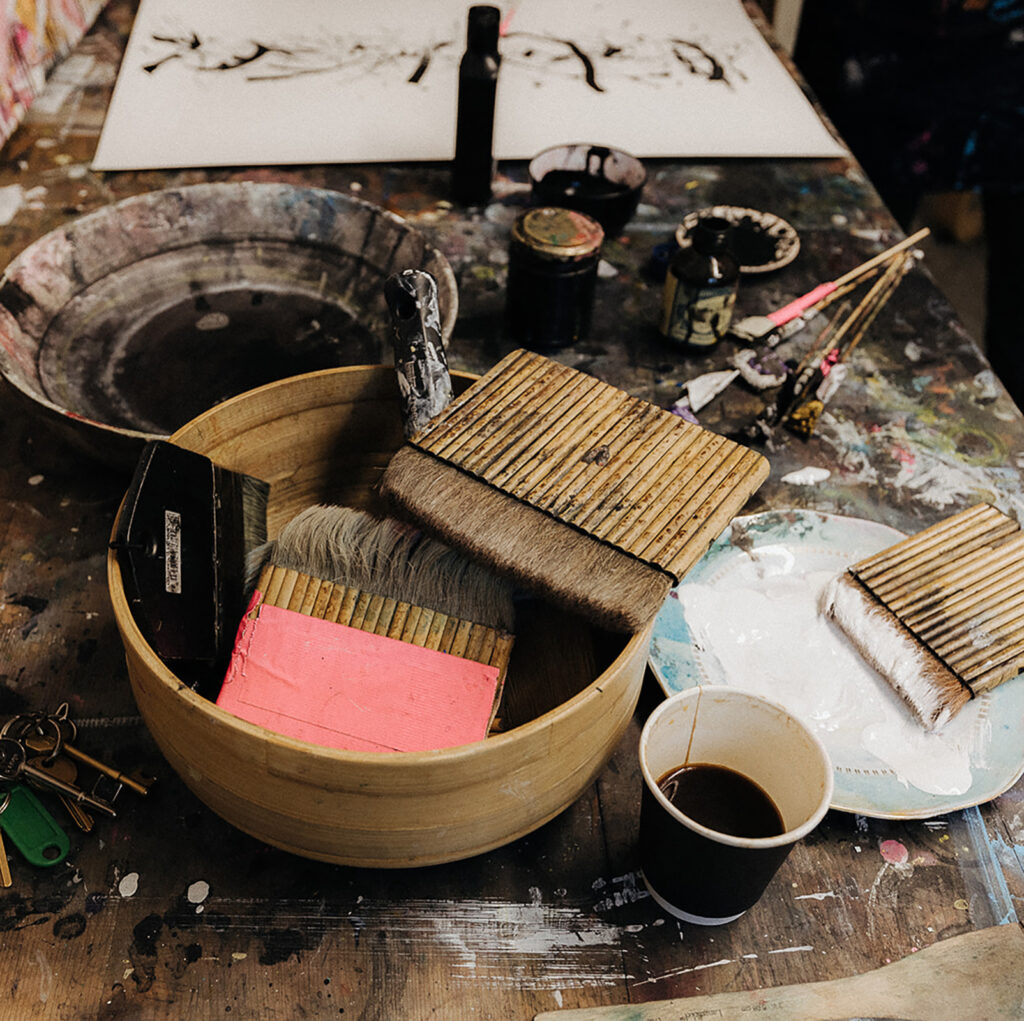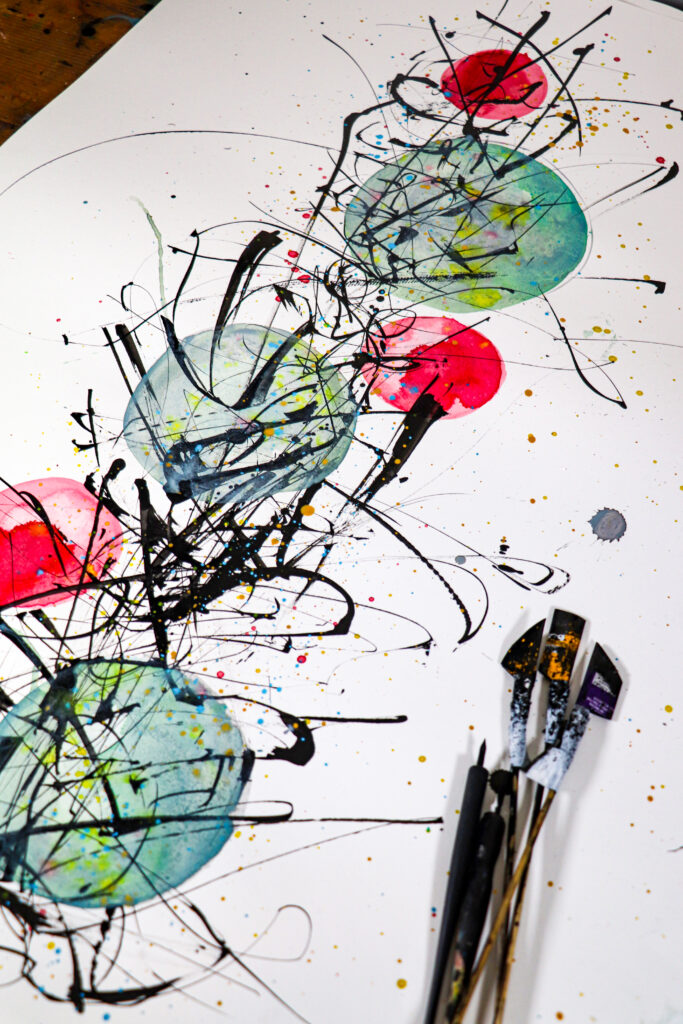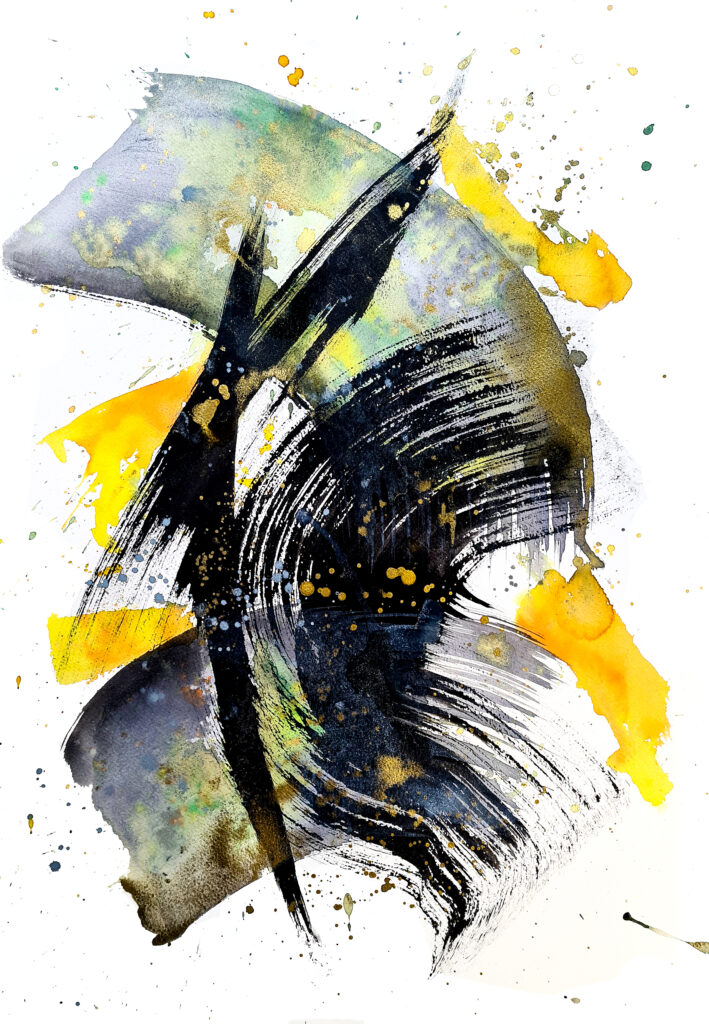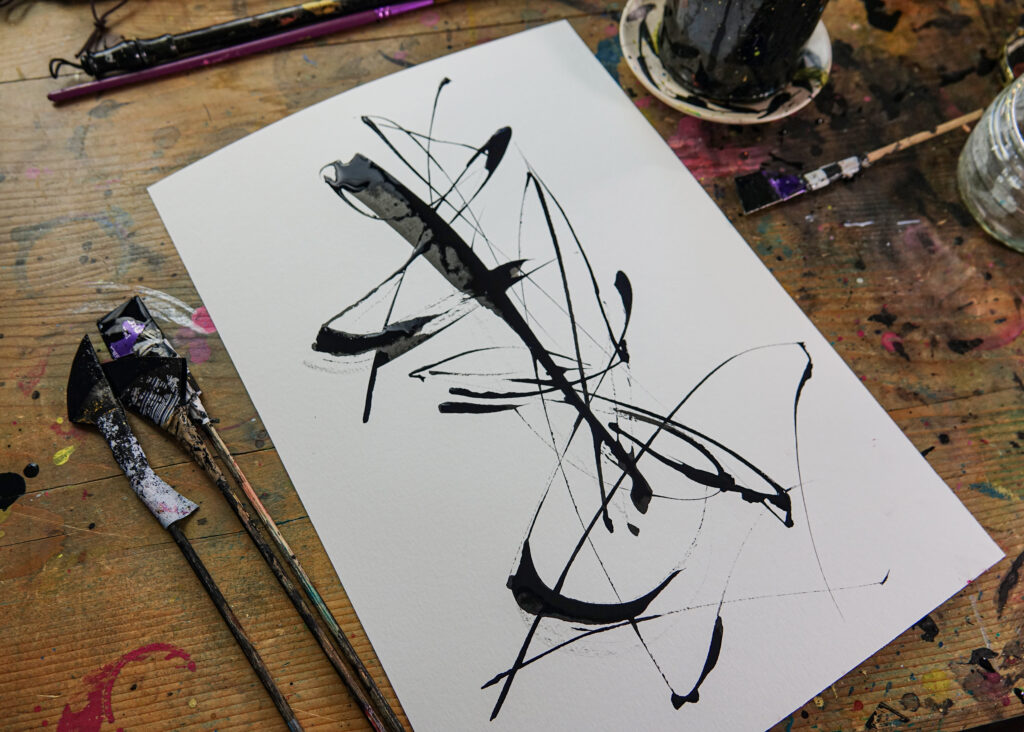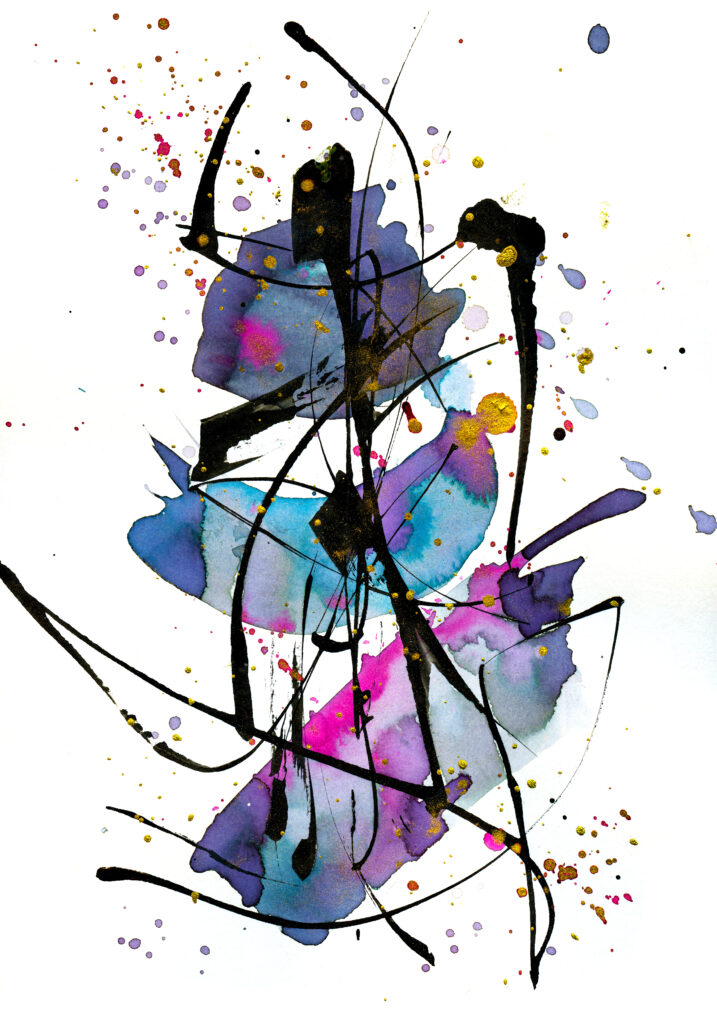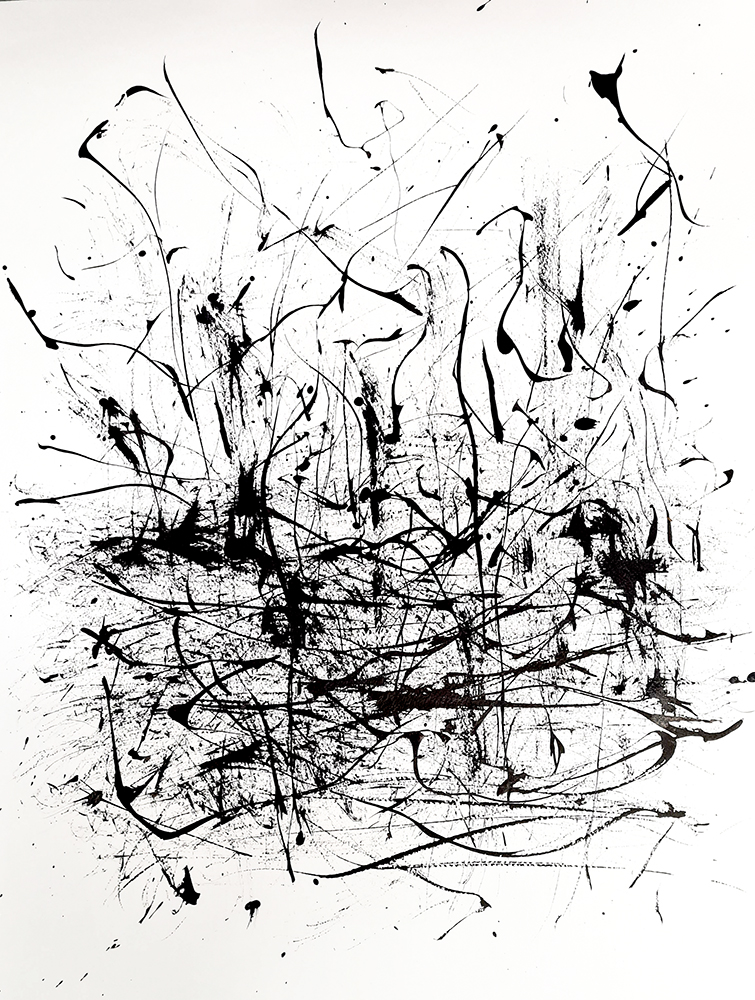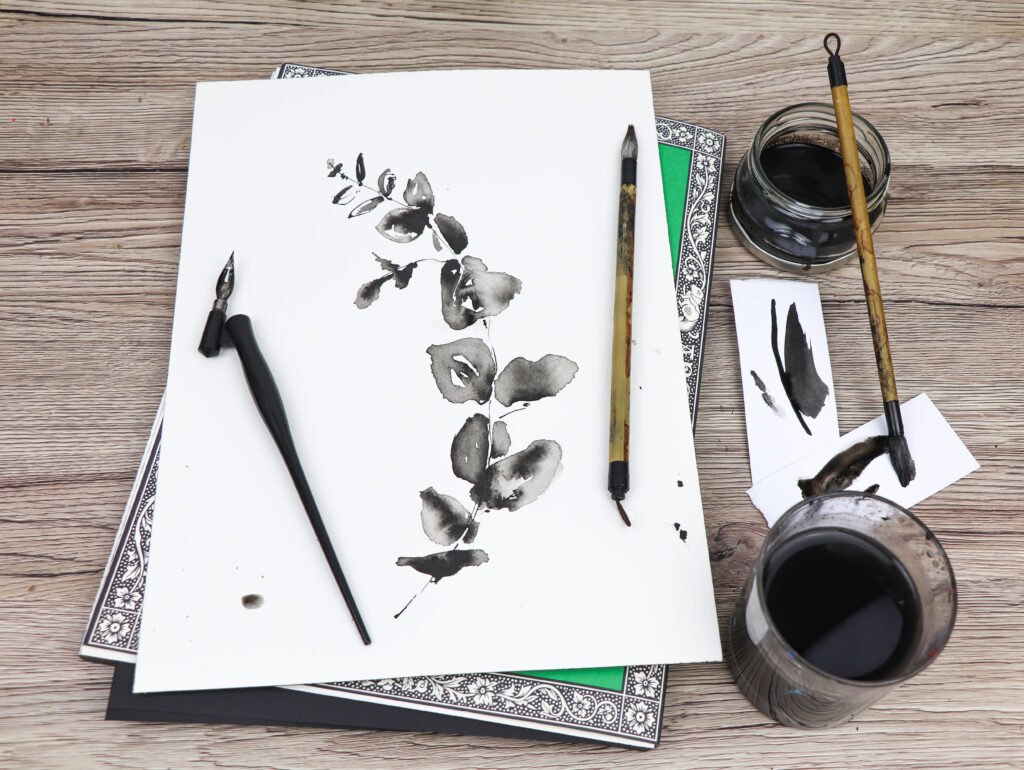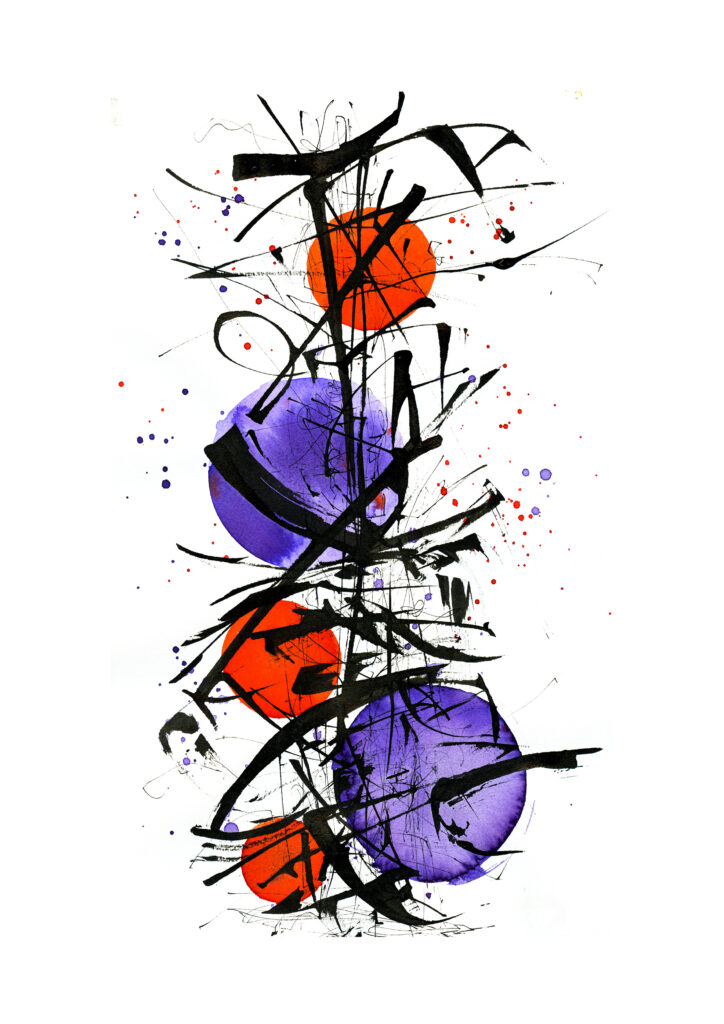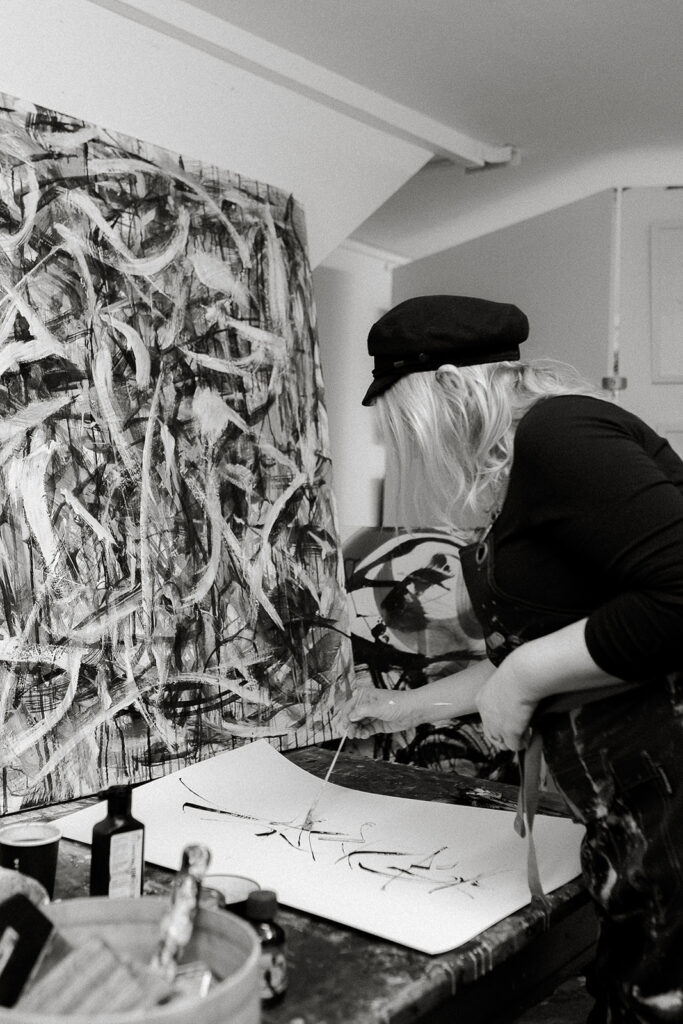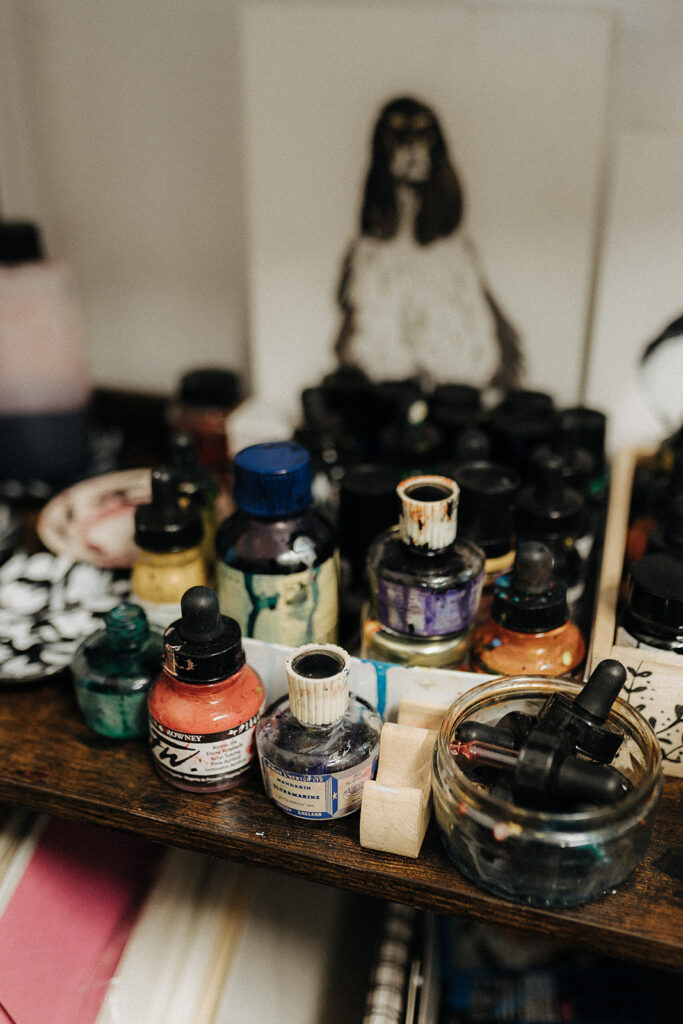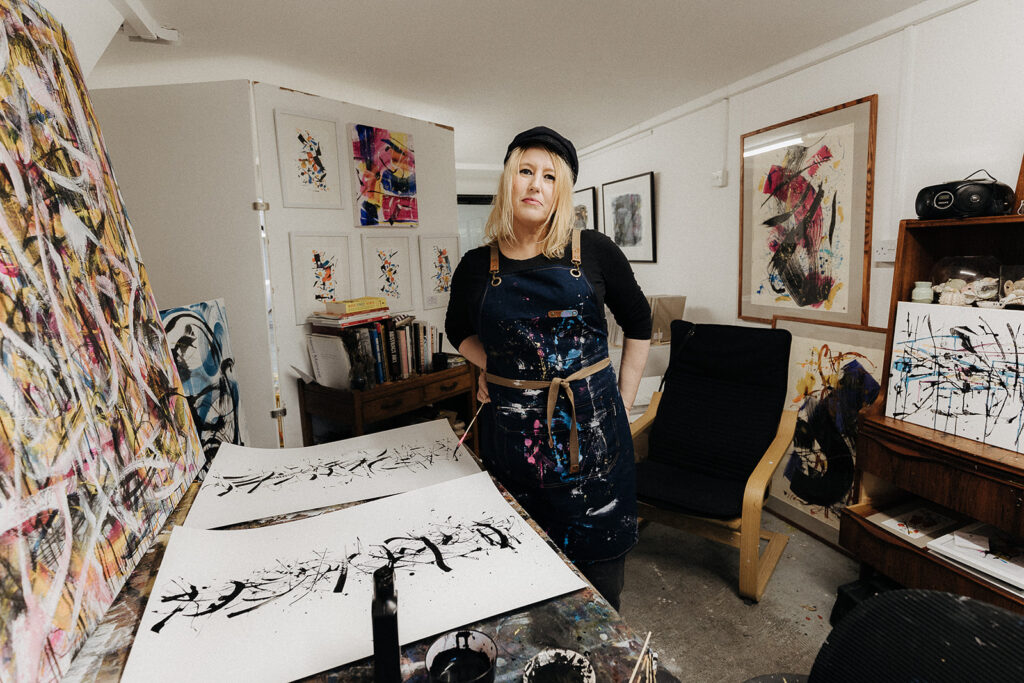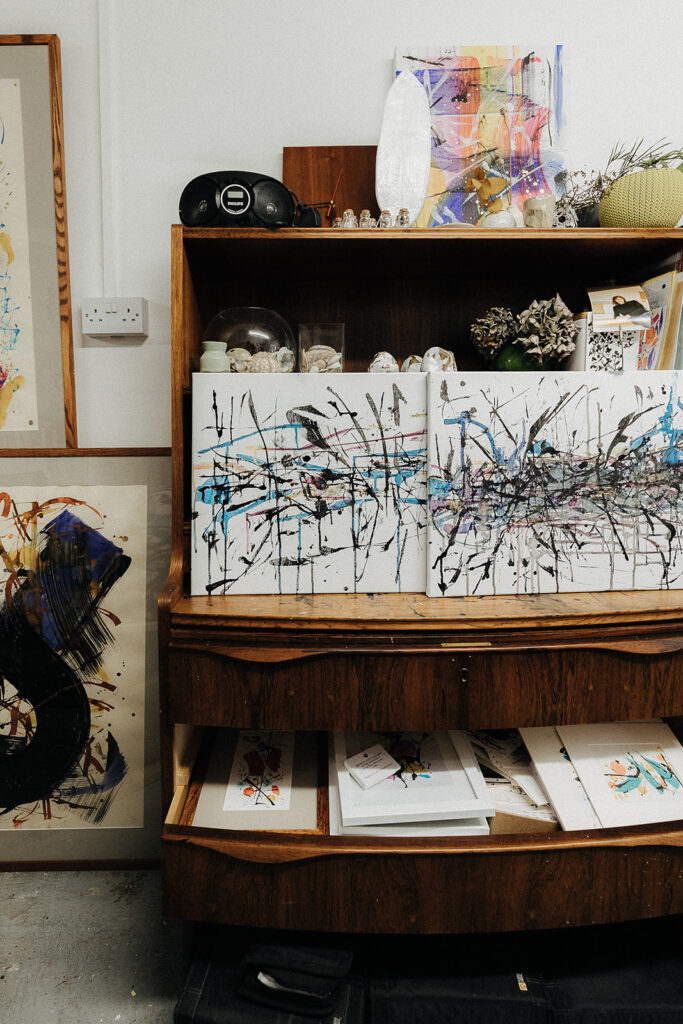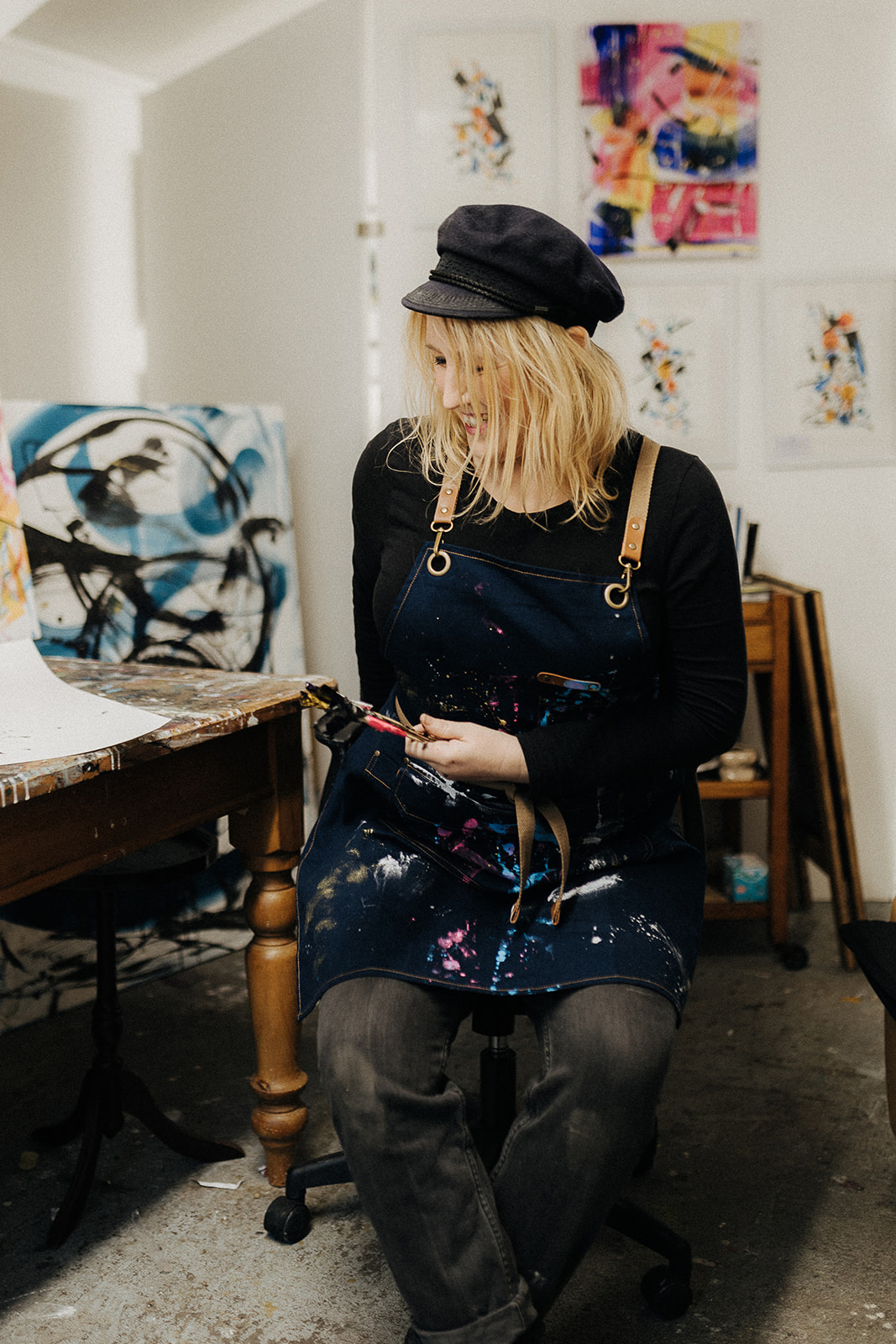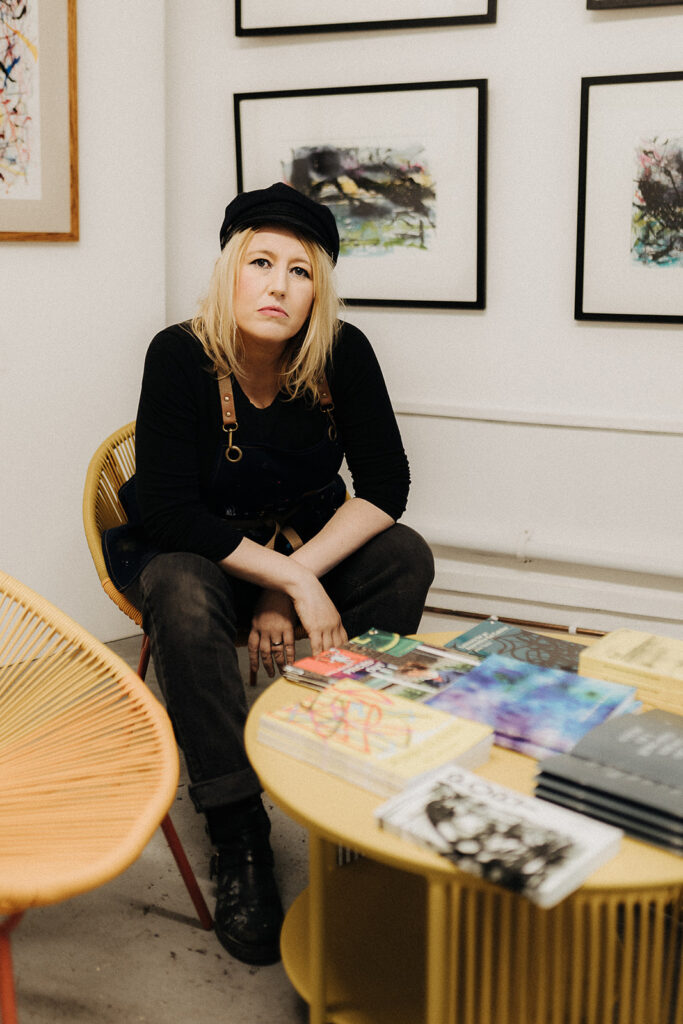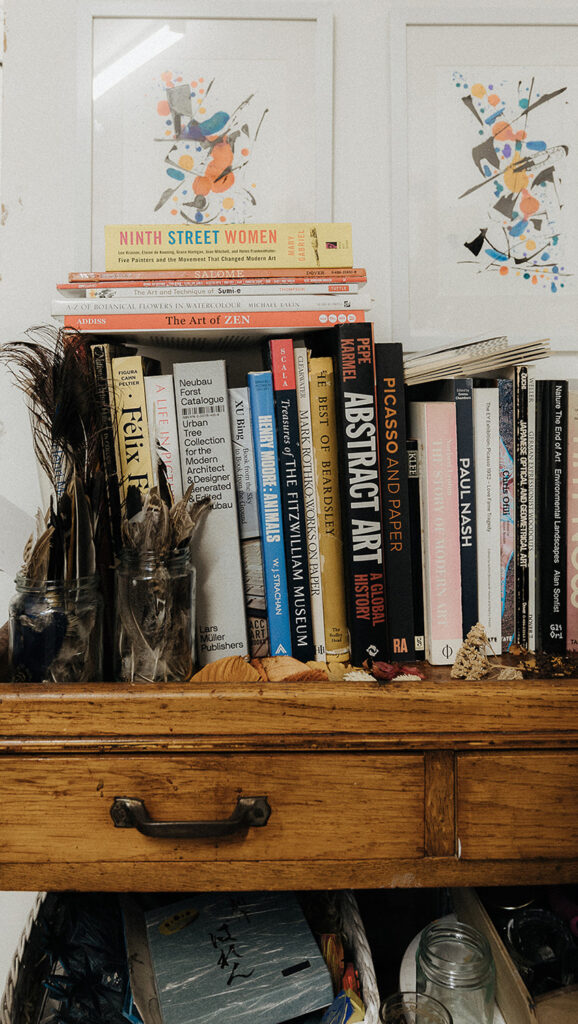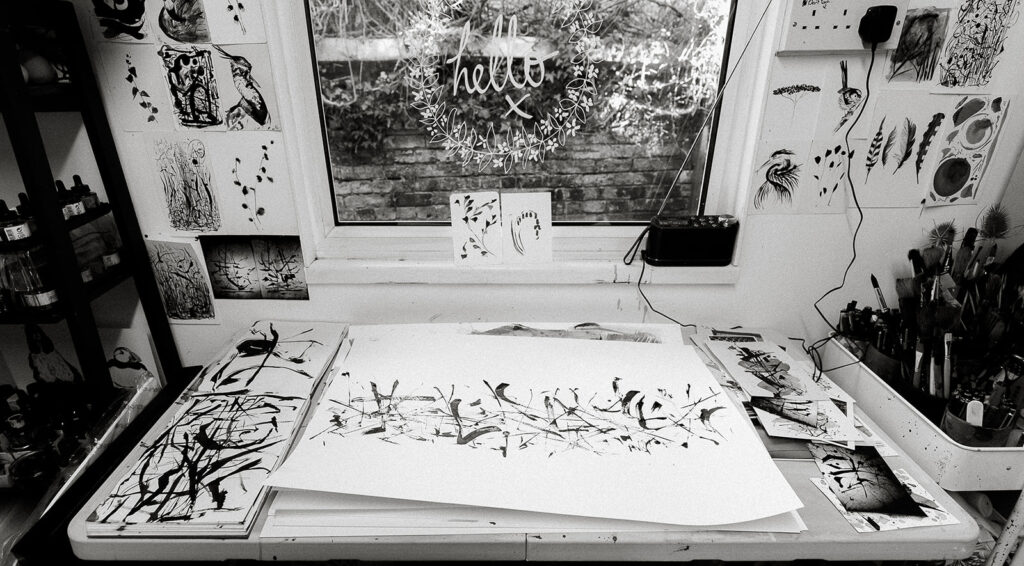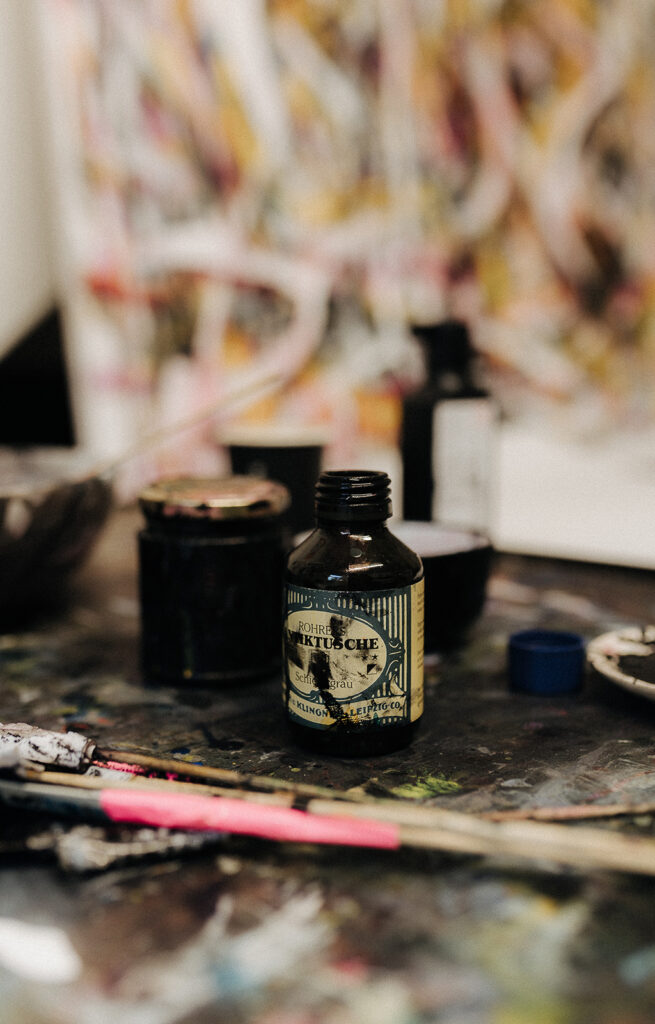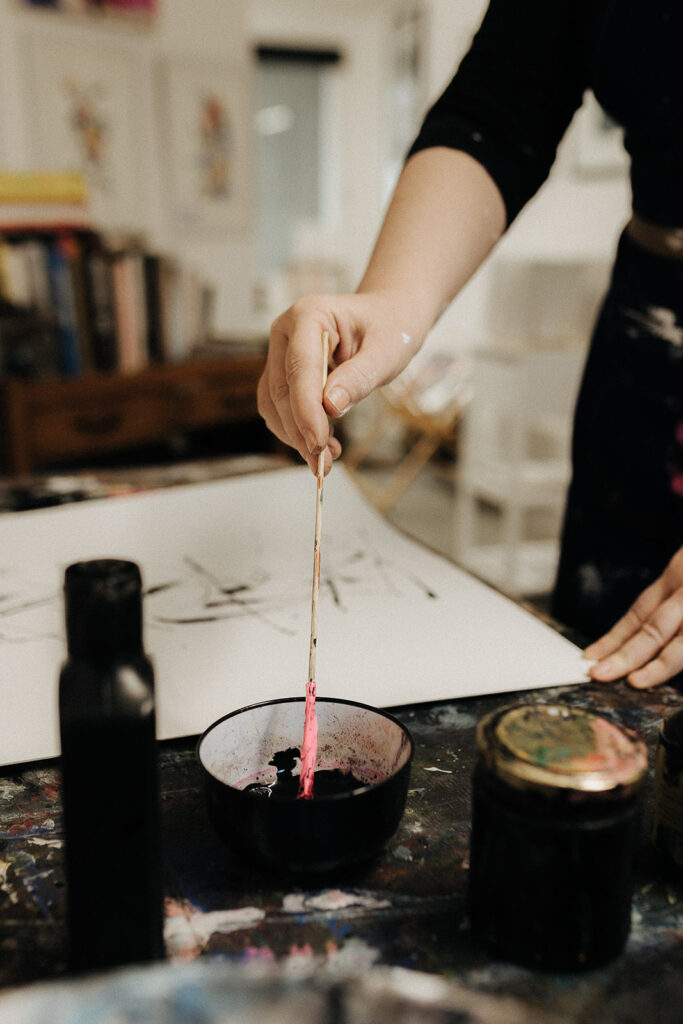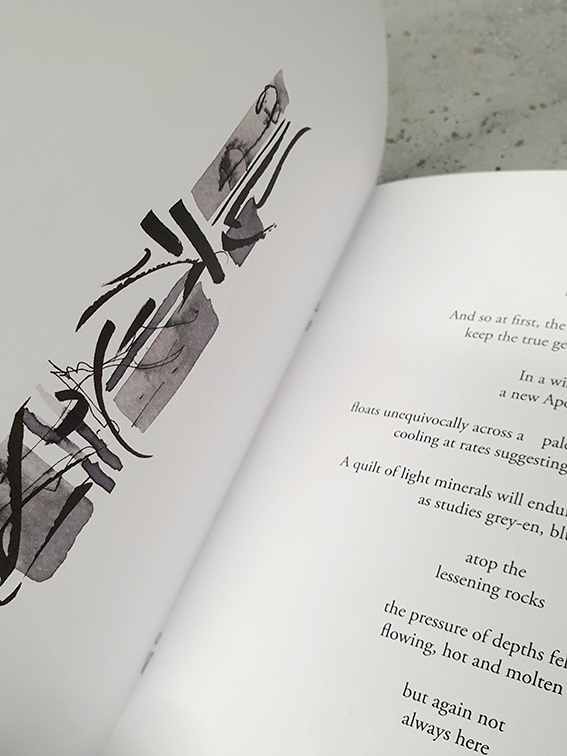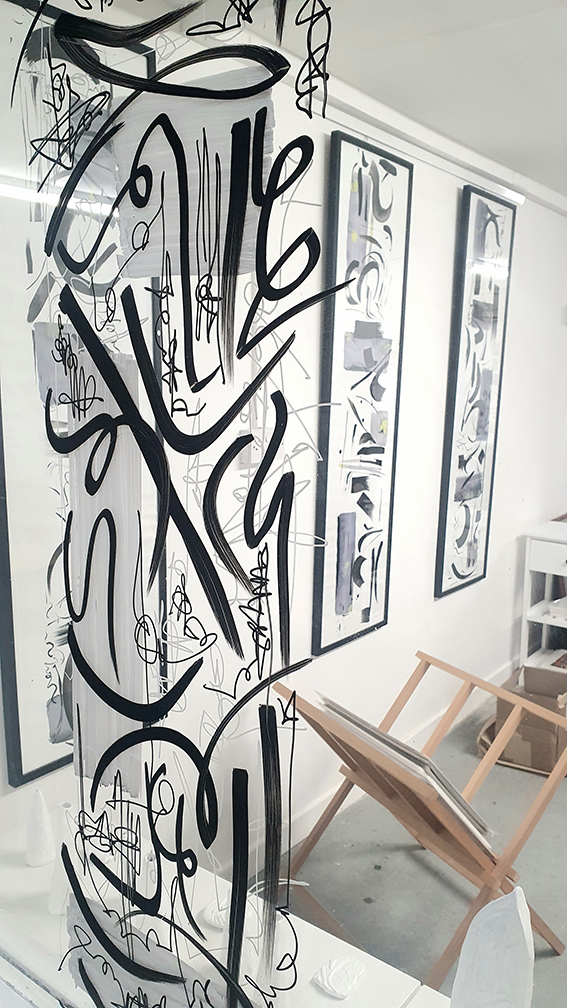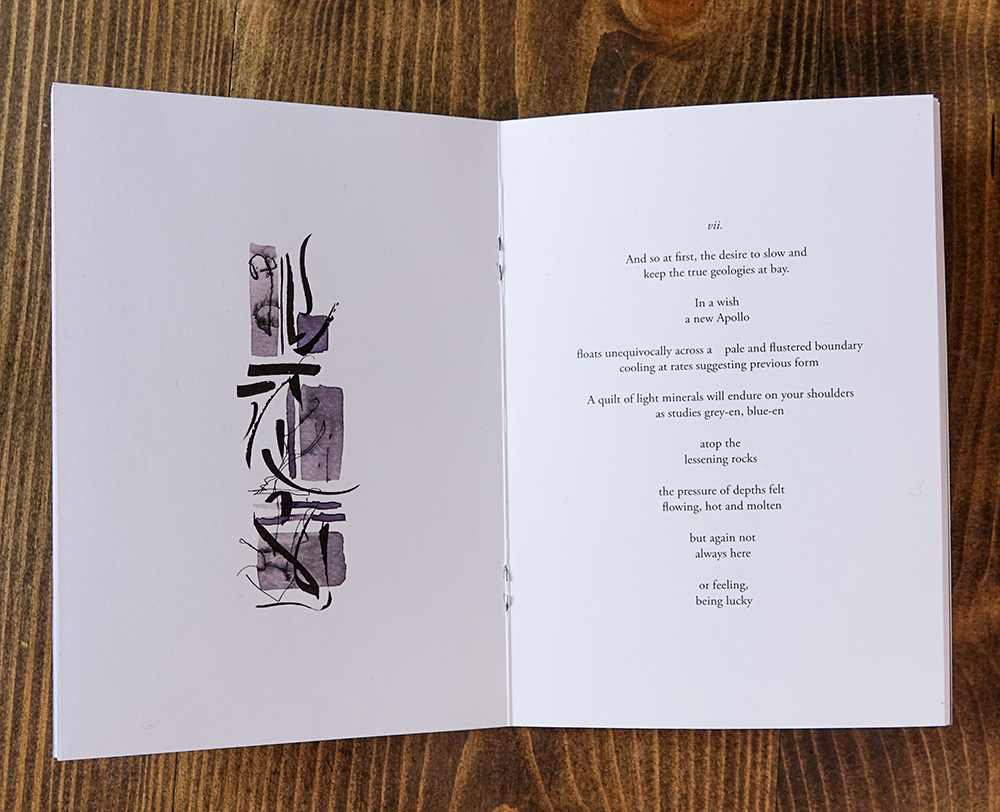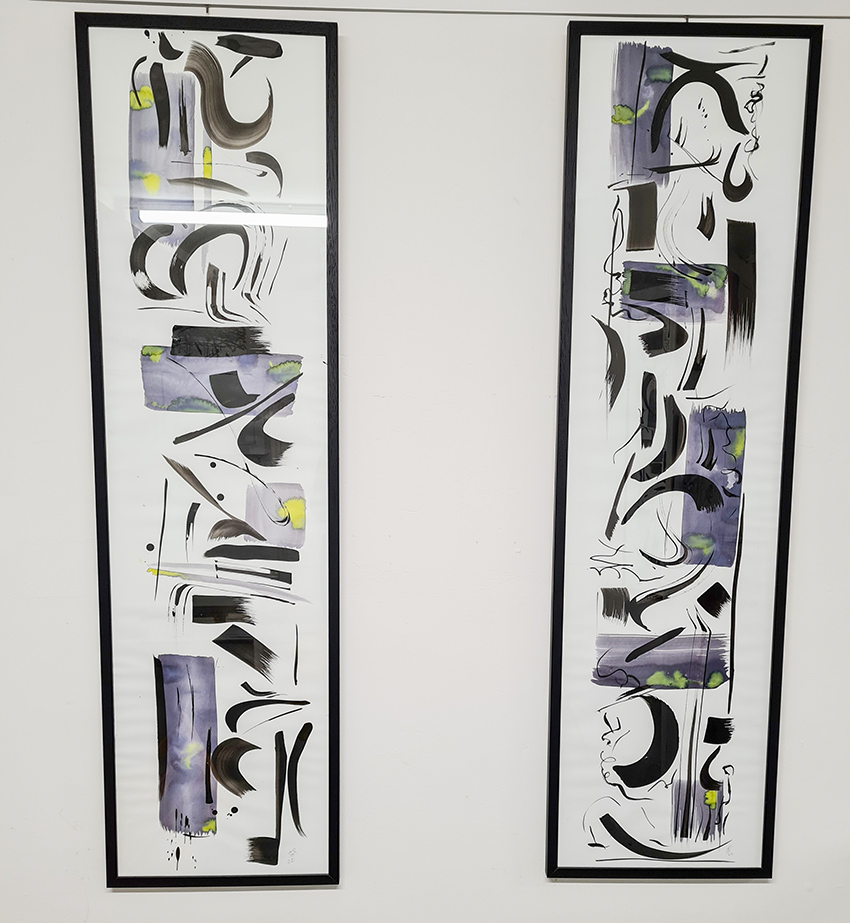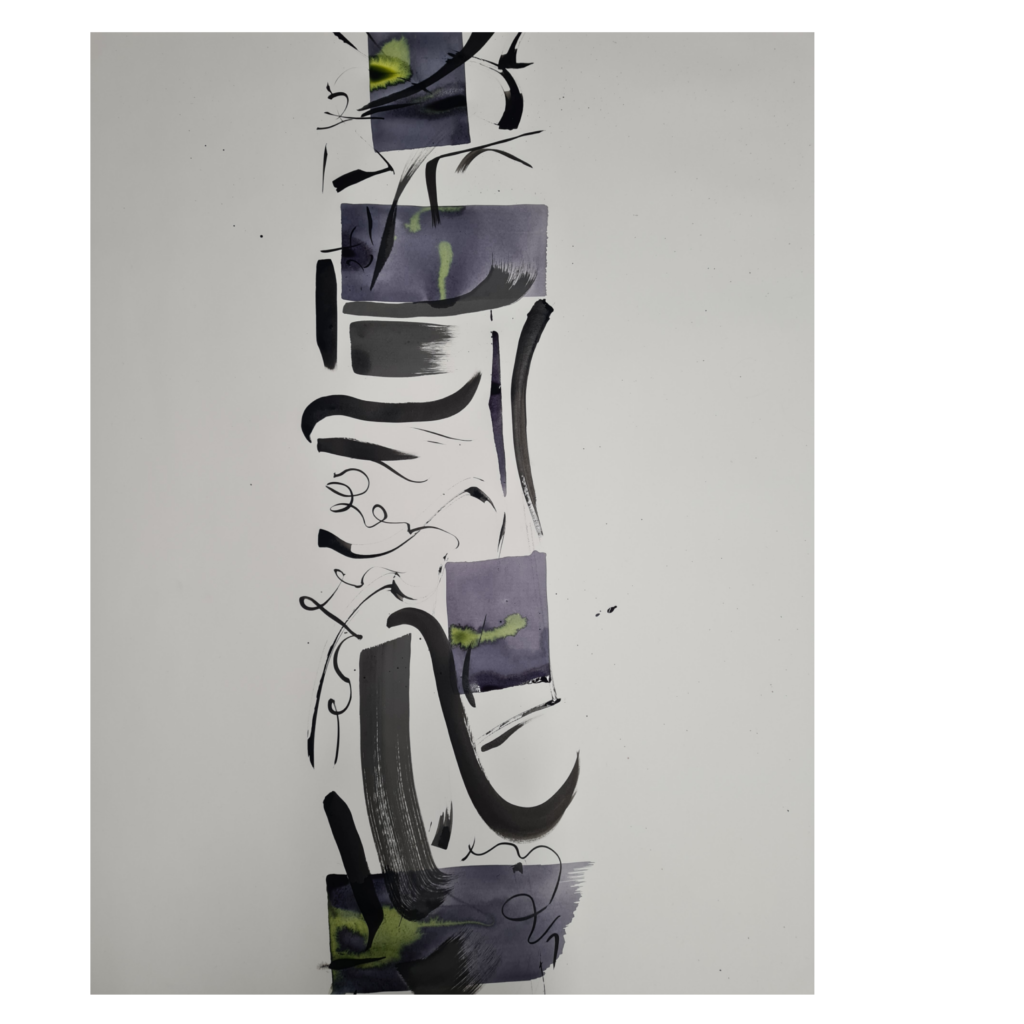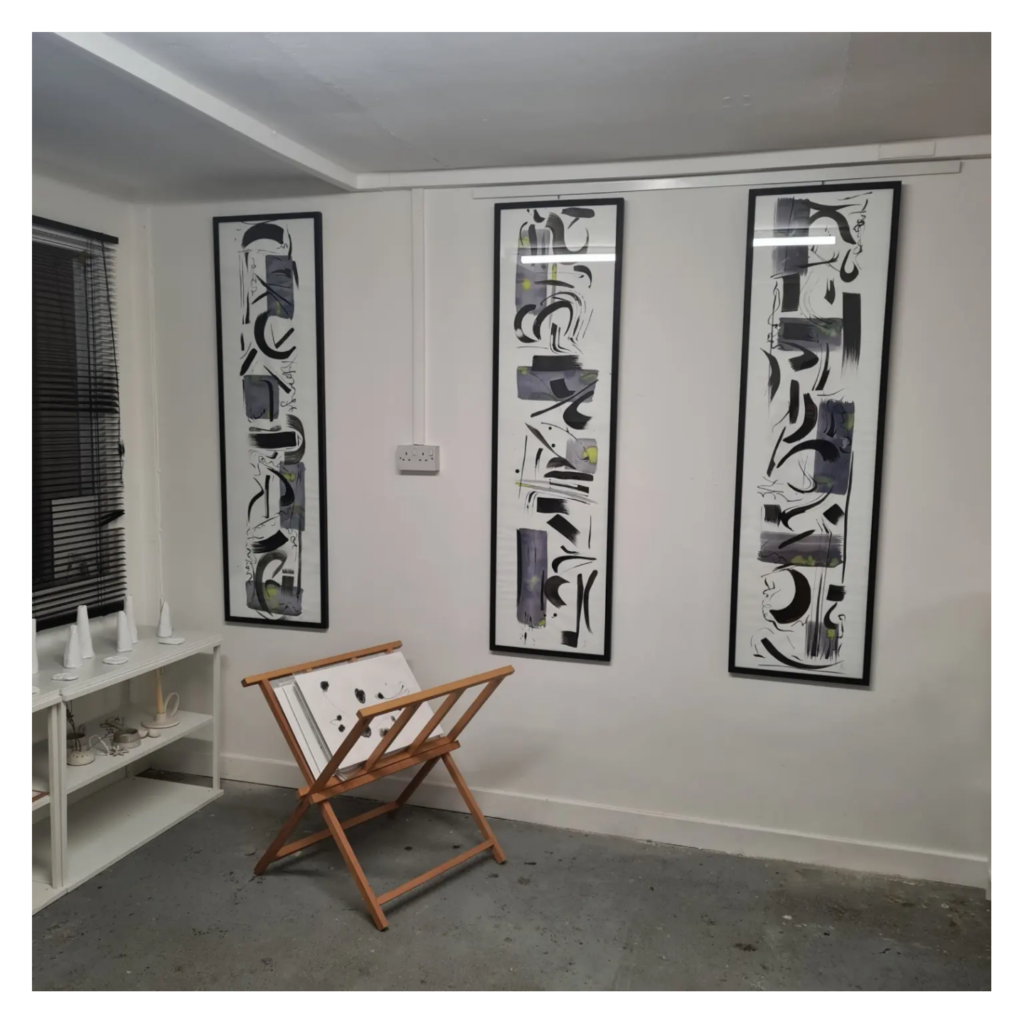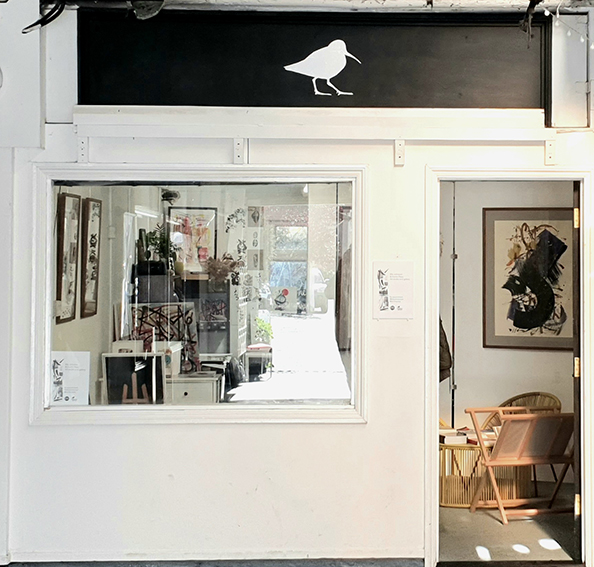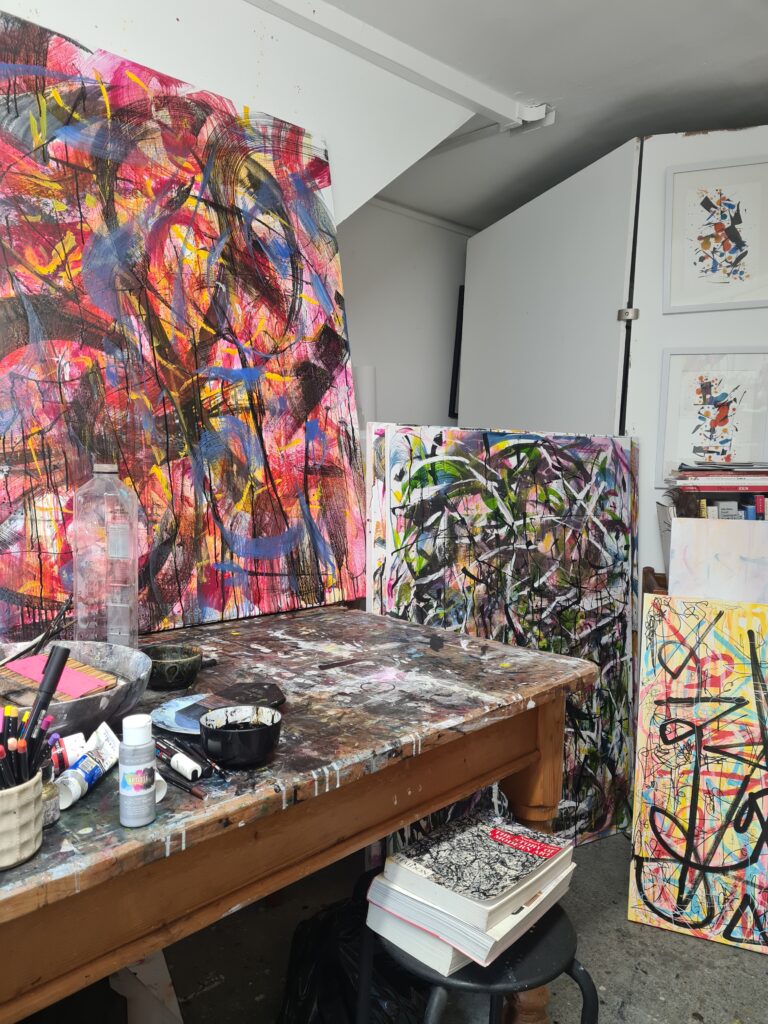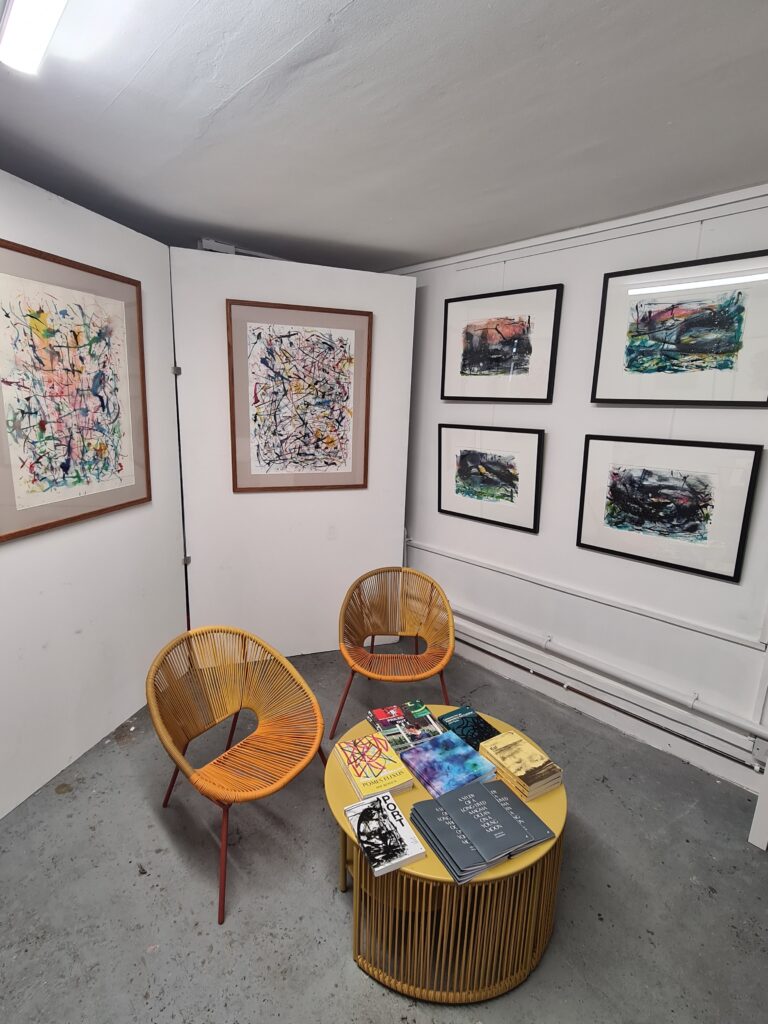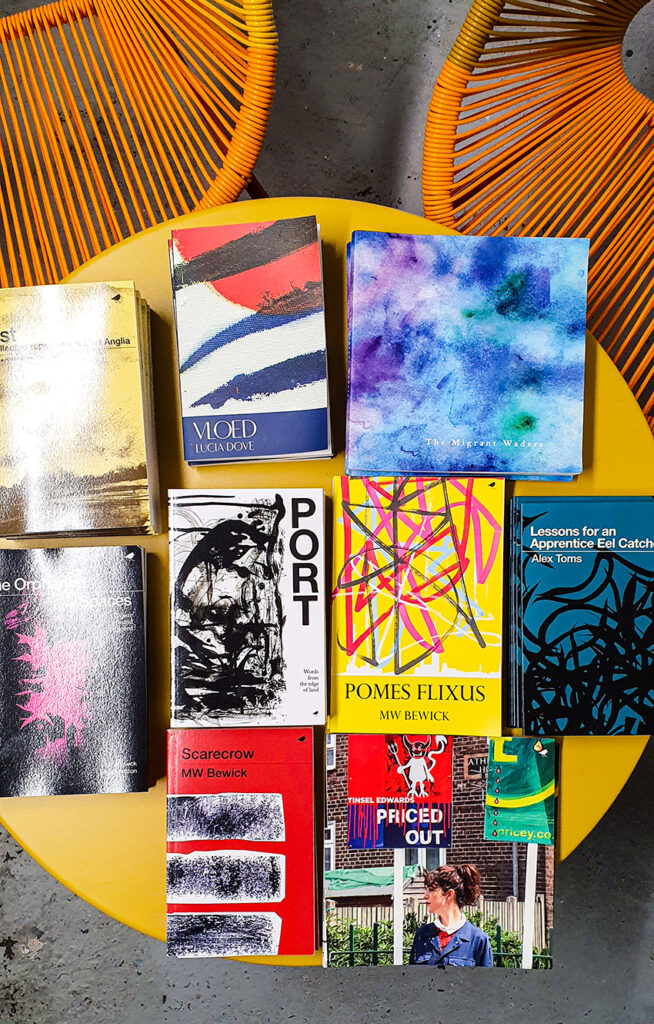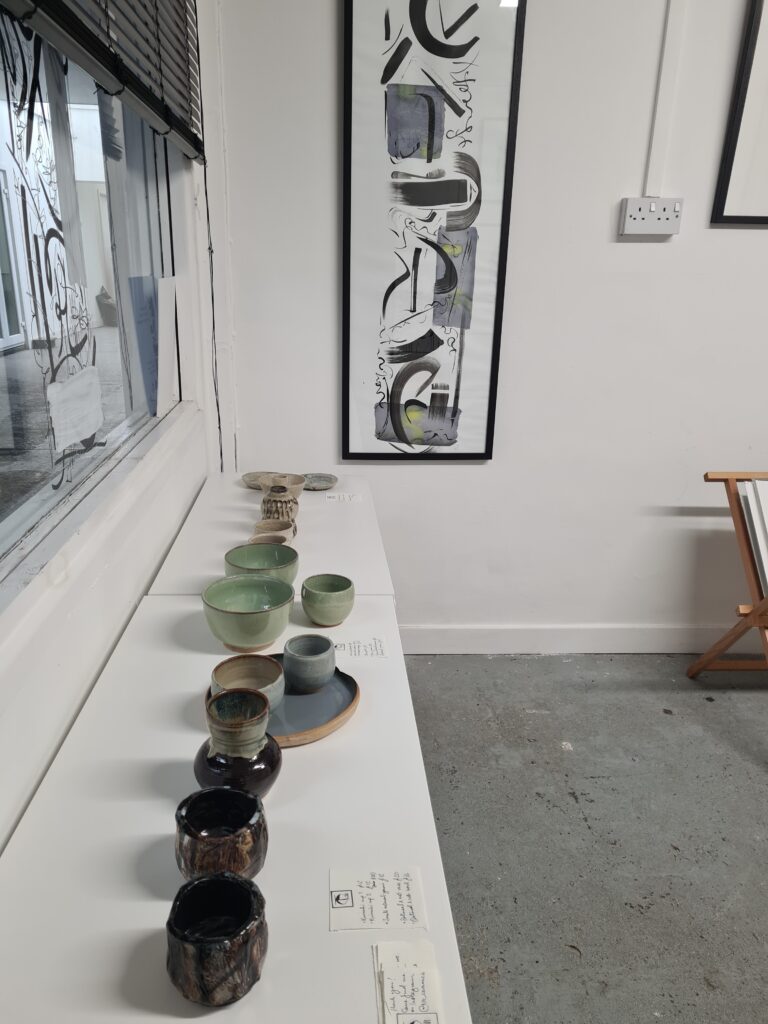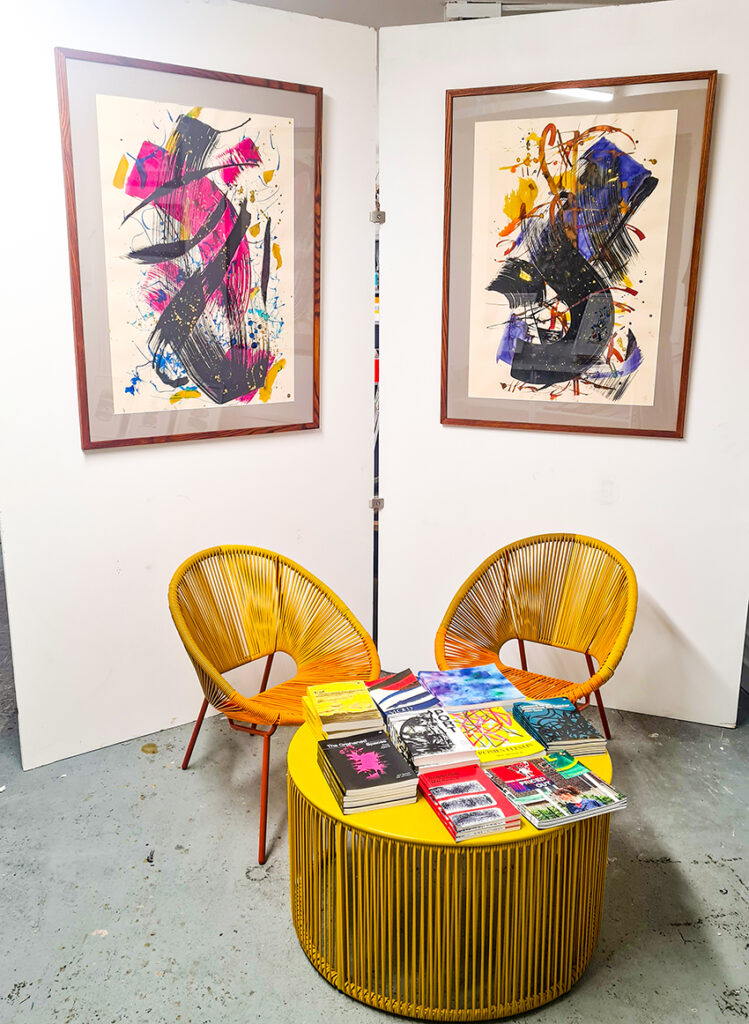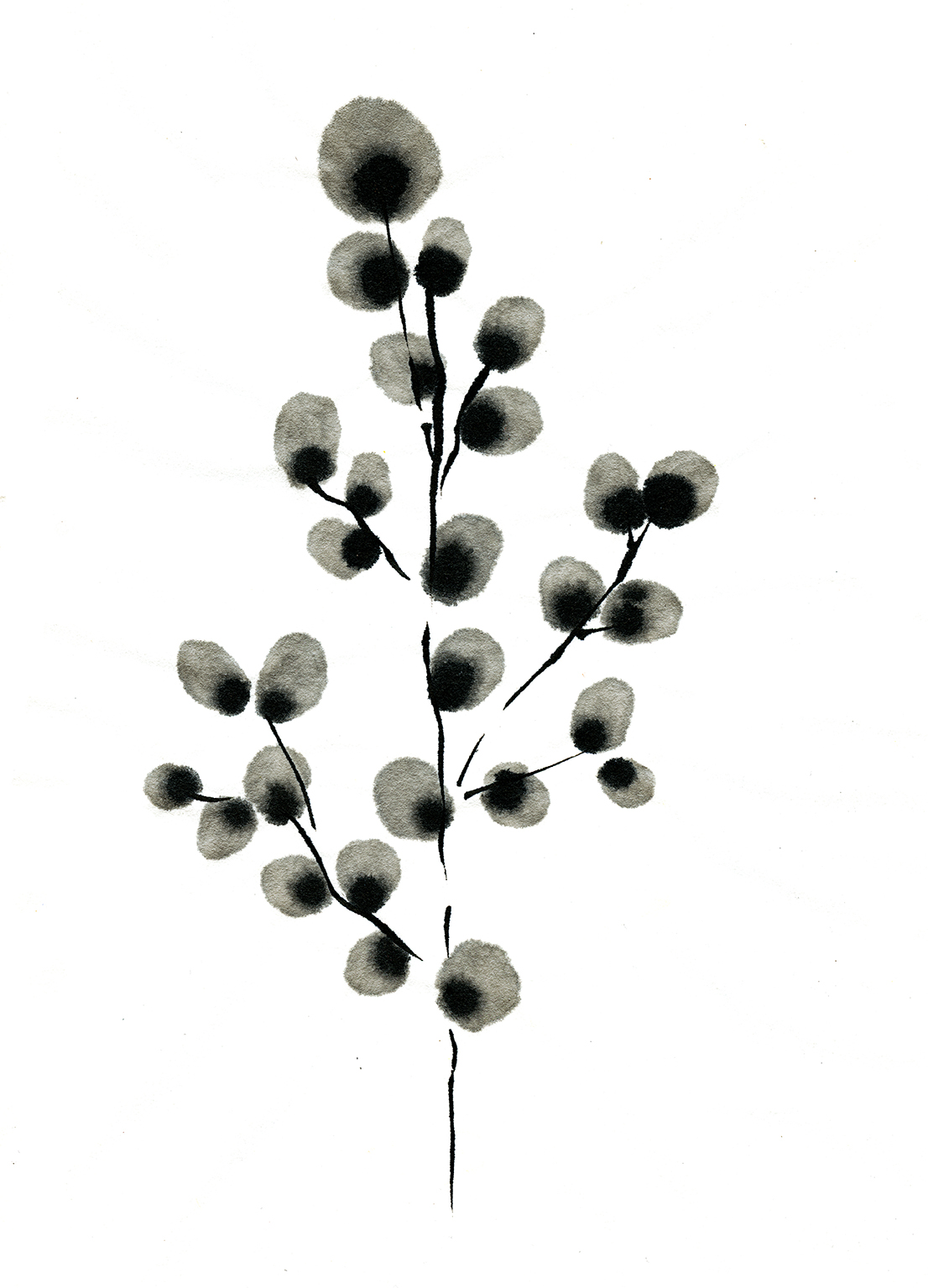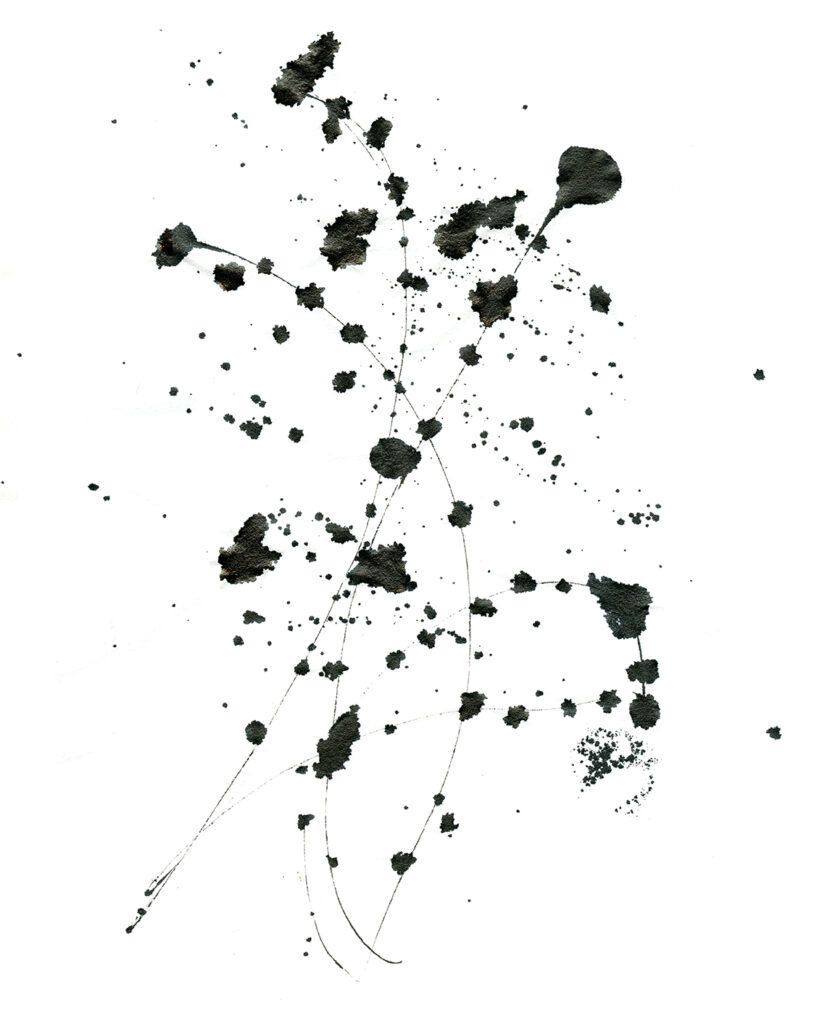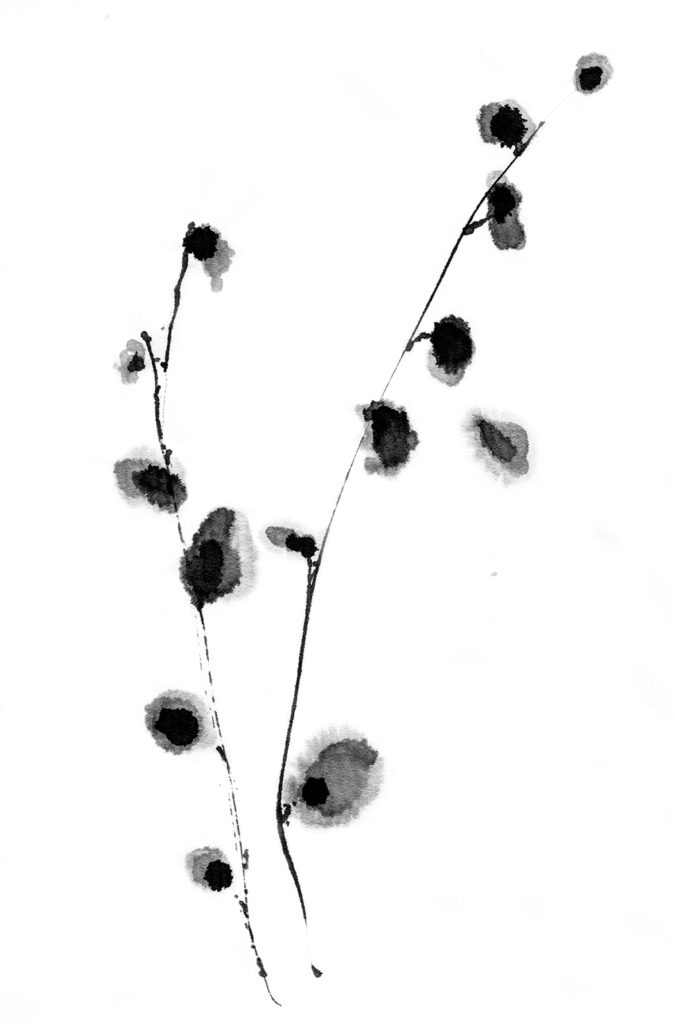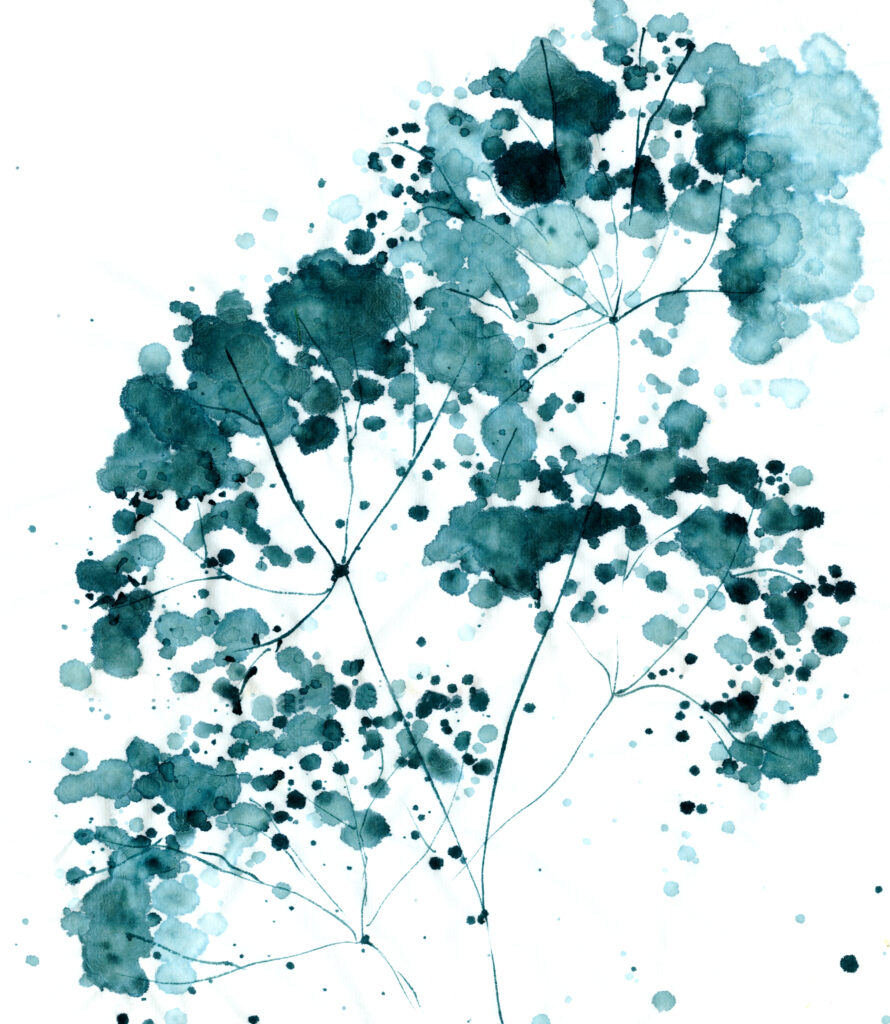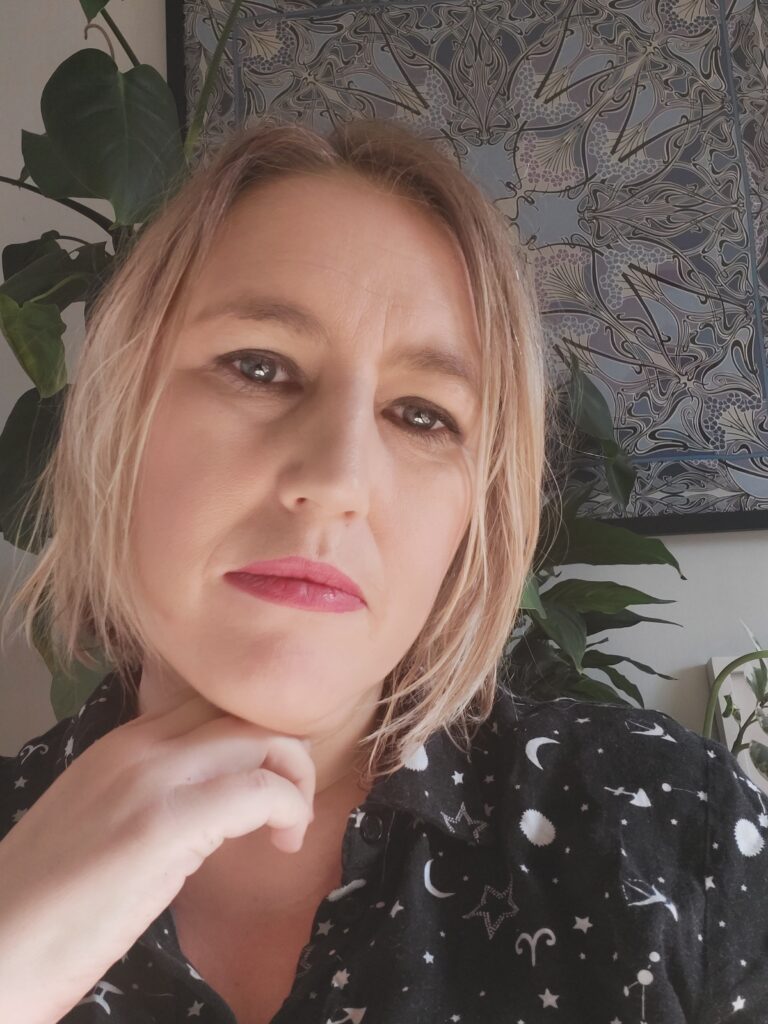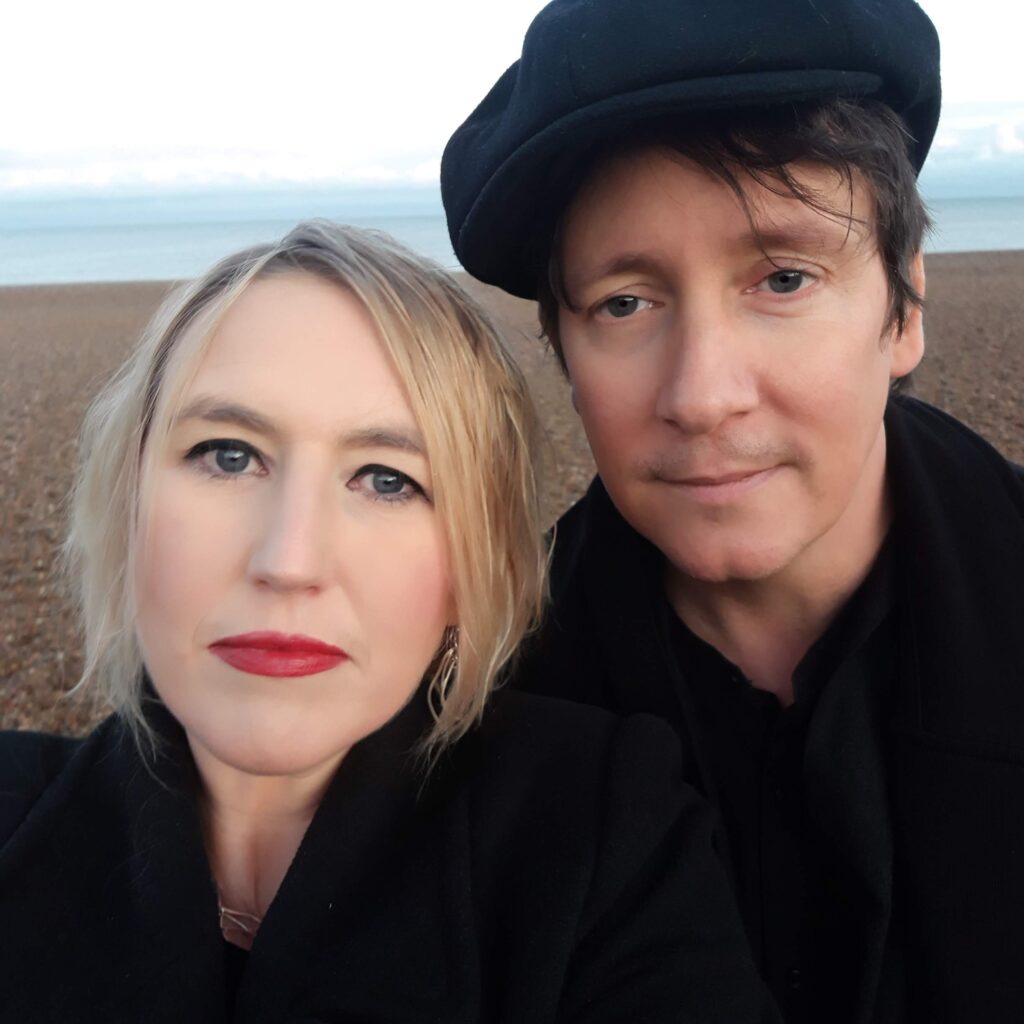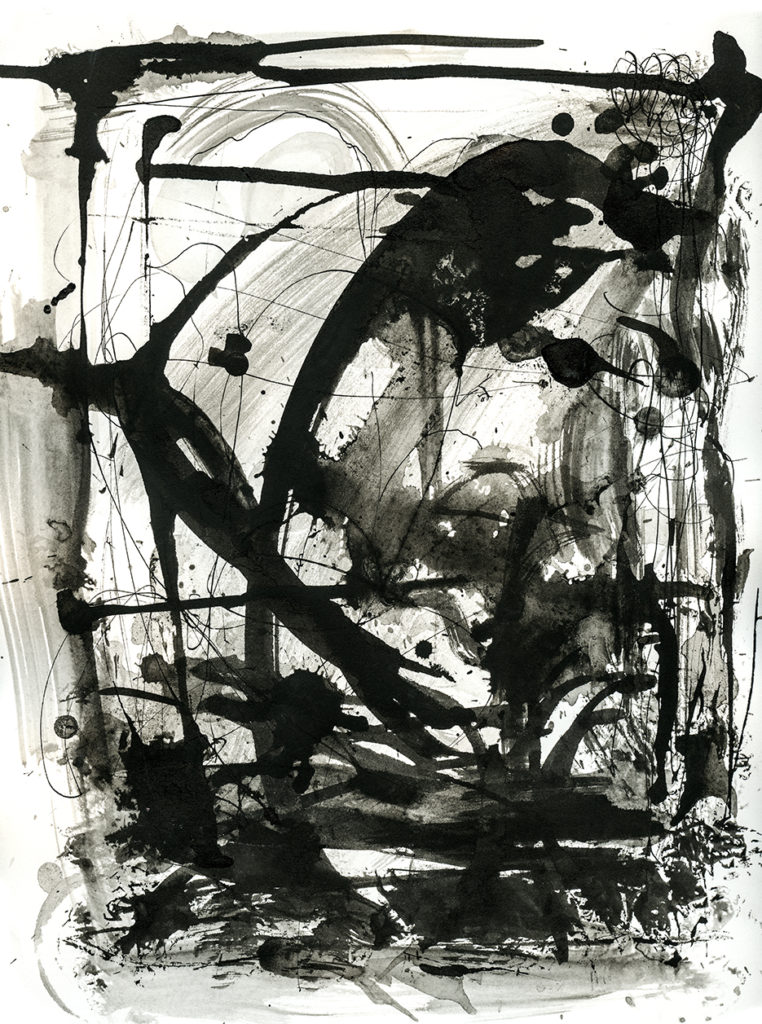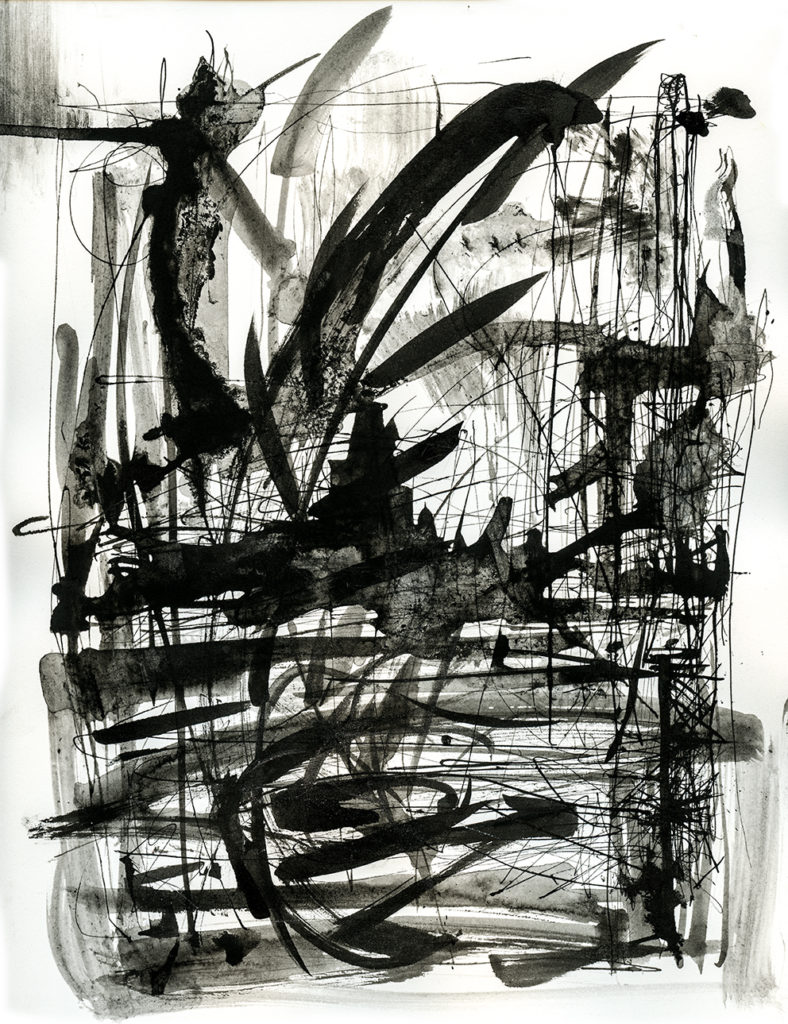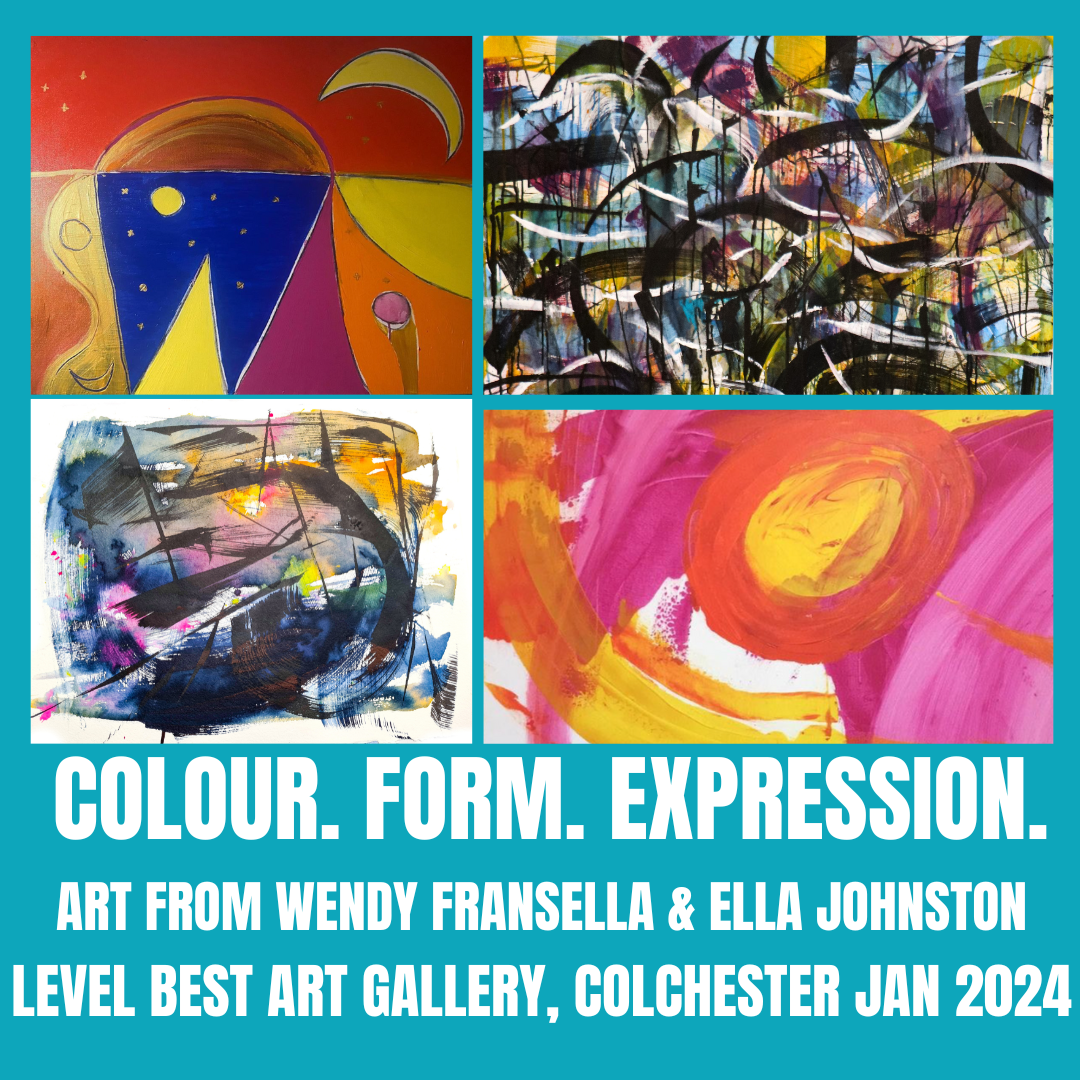
This month I had an art show with Wendy Fransella at Level Best Art Gallery in Colchester.
I was really pleased with the show. Level Best Art Gallery is an exquisite space and it was wonderful to see my work and Wendy’s wonderful paintings in such a beautiful setting.
Collaboration
I enjoy working with other artists and have adored Wendy’s work for a while now.
Wendy is a pleasure to work with and I felt there was a meeting of minds as well as a synergy with our art.
Our pieces really spoke to each other at the show. Our love for abstraction and mark-making was evident. While our work is different, I felt there was a harmony in the show and a conversation was being had with the pieces.

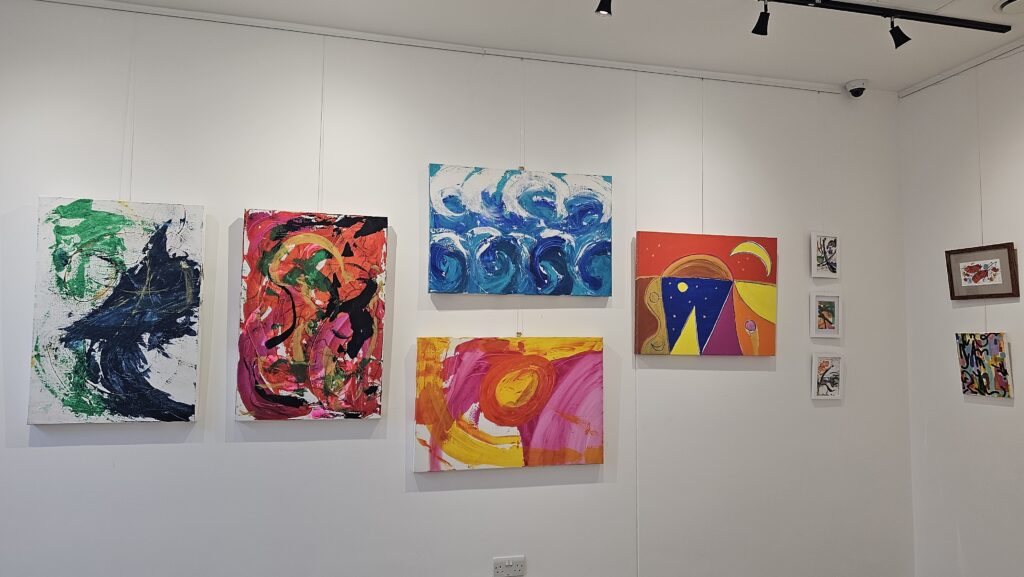
The work I chose to display in this show is a deep exploration of mark-making, spontaneity and memory. The pieces are also a record of my interior thoughts and reflections on my own history and the lives of people that have influenced me. With this in mind I thought I’d give you my motivations and thoughts behind the individual pieces in the show.
Musical landscapes and hard remembered conversations

My small MUSICAL LANDSCAPES are miniature abstract music scores that reference asemic text and pay homage to the artist Victor Pasmore.
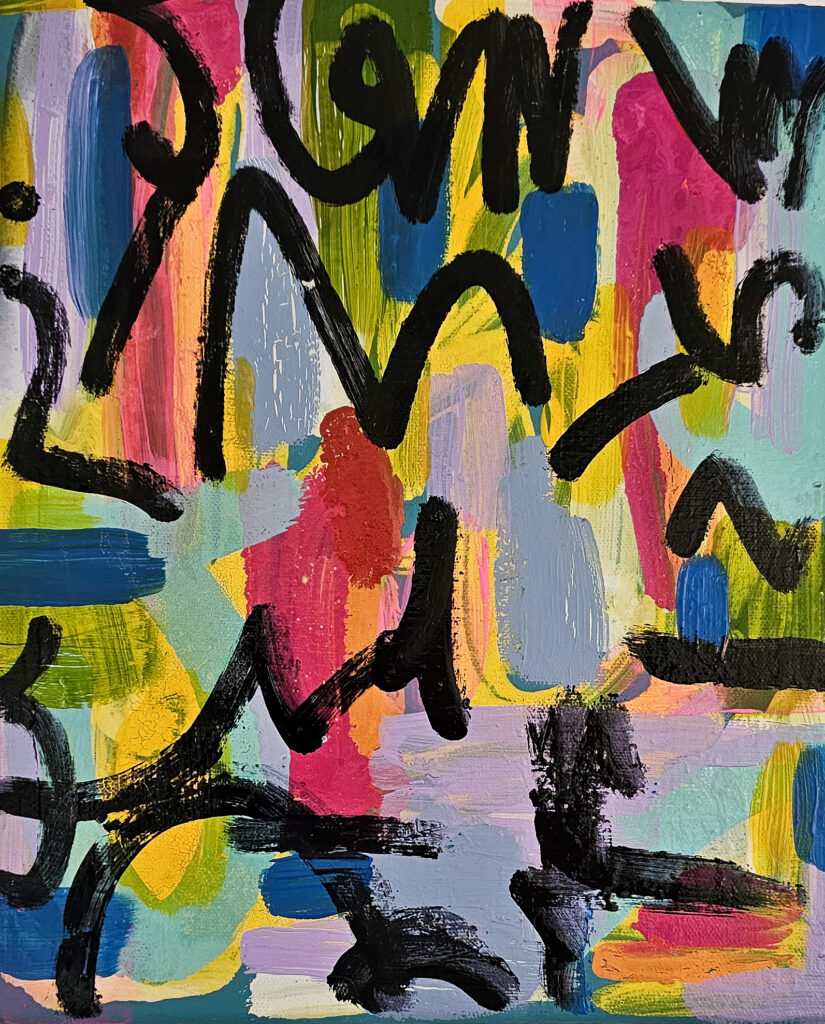
My HALF REMEMBERED CONVERSATIONS paintings further explore asemic mark-making and recall the vague dreams and plans I’ve made on hopeful sunny days. These pieces also reference the calligraphic line seen in graffiti and are a reference to my urban upbringing.
Live generously

My large-scale piece, LIVE GENEROUSLY, is part of a series of homage paintings that seek to pay tribute to female trailblazers. These women have defied the expectations of their families, society, prevailing narratives and/or authorities to challenge conventional thinking. The series is a contemplation on the lives of these women.
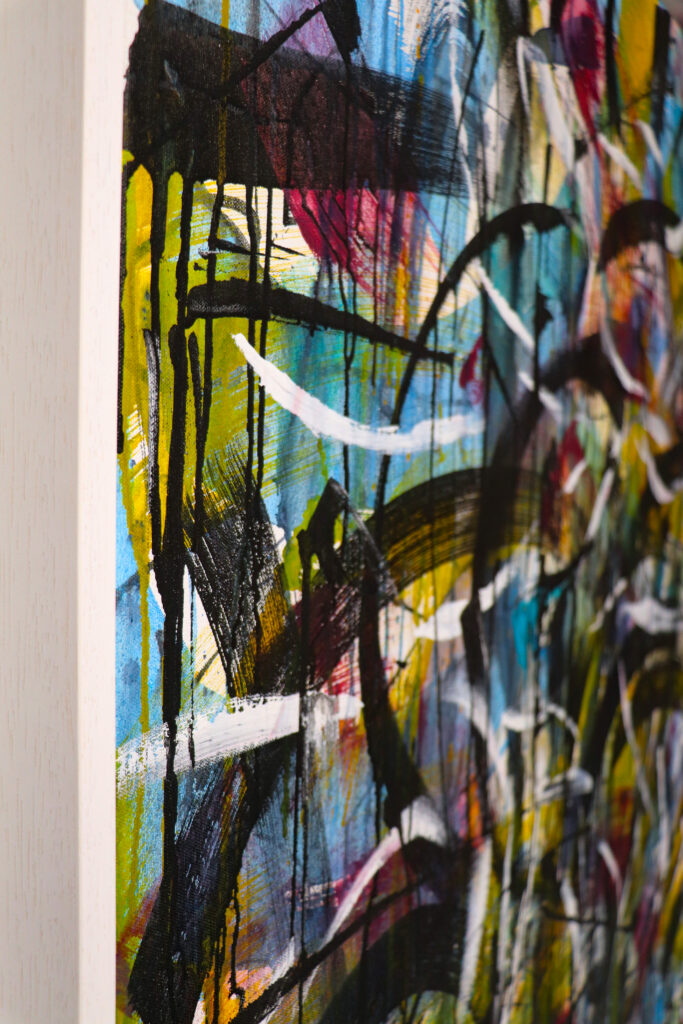
The layering of colours and mediums explores the many complexities and contradictions of their lives and the people they knew, as well as the scenes and political landscape that were part of. The pieces also visually reference military fatigues and camouflage, in light of the battles these individuals have fought.
The bats in the garden over lockdown, Centred in time and We are here now
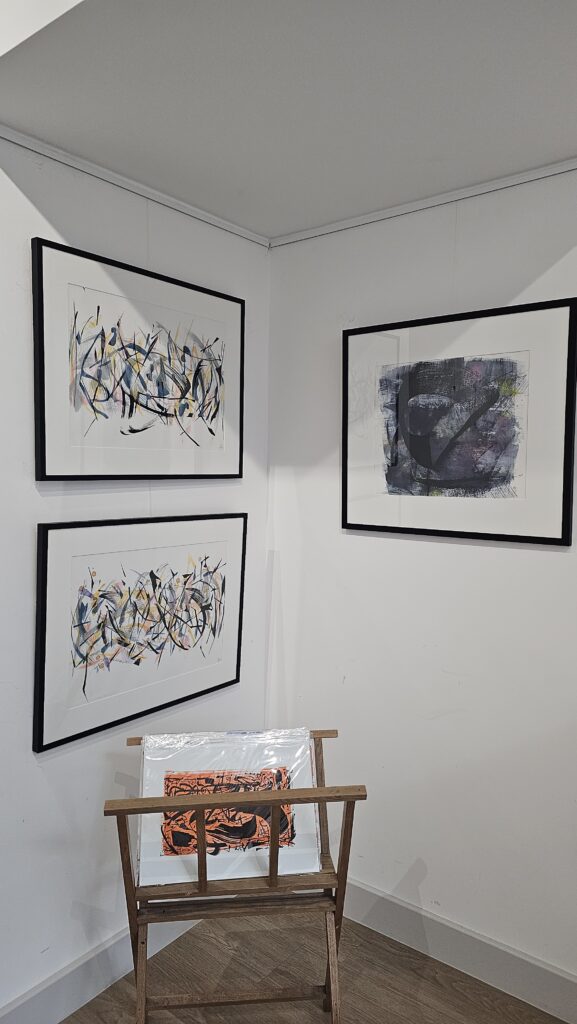
I explore memory and love in THE BATS IN THE GARDEN OVER LOCKDOWN. Created in 2023, these pieces evoke a memory of looking out of the window during the pandemic with my partner. The brush strokes hope to evoke the sense of magic and wonder we had while watching the bats swoop for moths in the dusk.
The CENTRED IN TIME and WE ARE HERE NOW now ink on paper pieces are abstract tributes to nature and the mood evoked by a walk along a river, estuary or beach. Whatever the time of year, on any particular day, the meeting of sky, land and water can have a uniquely beautiful quality to it.
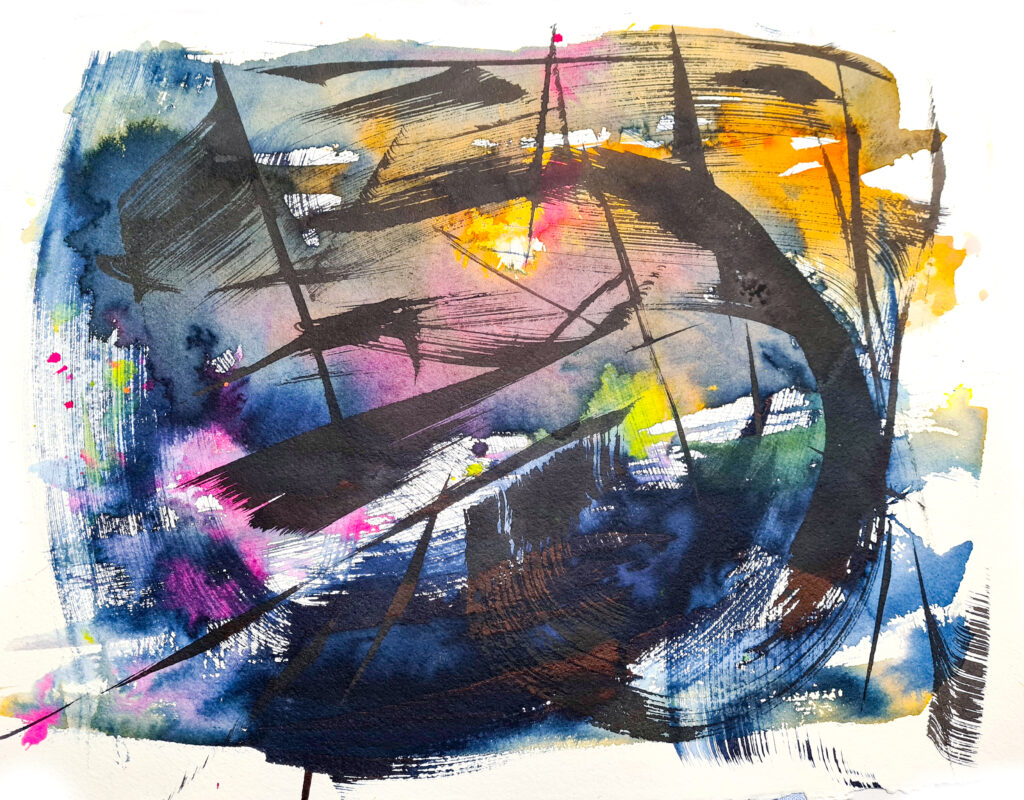
These artworks perform as palimpsests, with layer after layer of ink colour being applied to the paper, saturating the surface and merging into another. With hues of navy, pink and black it aims to conjure a sense of the magical quality of the landscape as the day turns into evening.
Rave sounds of the reed warblers and I can hear the music travel
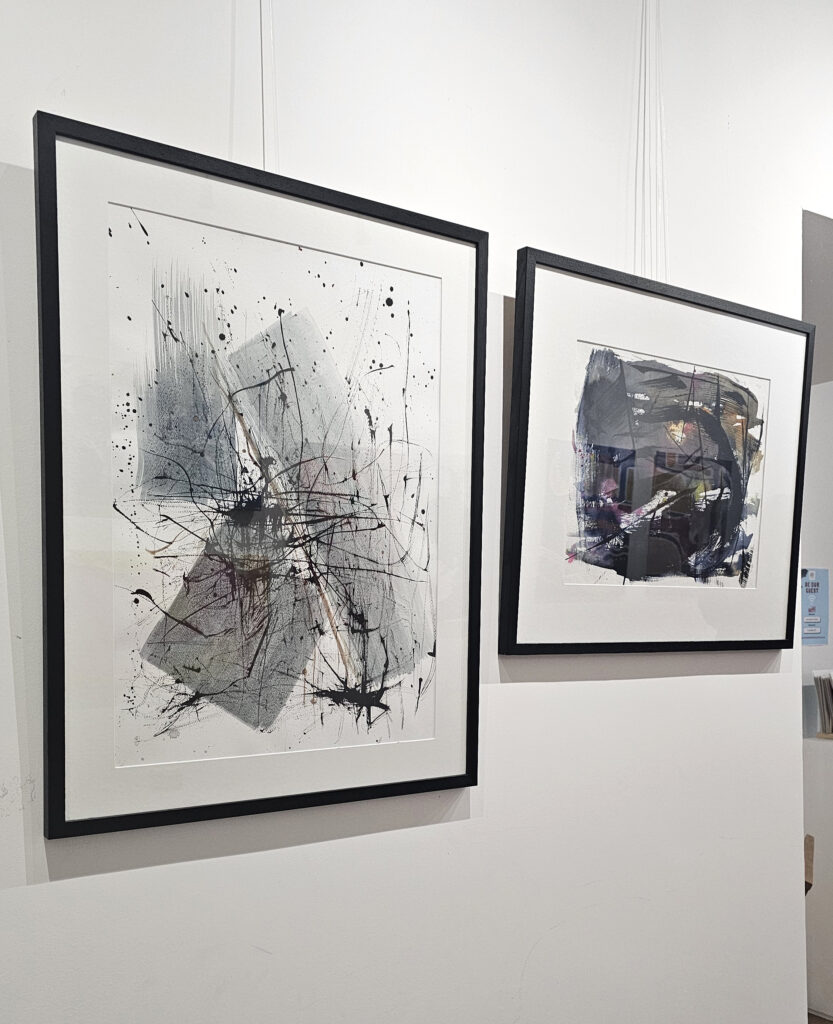
My RAVE SOUNDS OF THE REED WARBLERS artwork is a remembered landscape. I created it using feathers found in Wivenhoe woods and teasels gathered from the Ferry Marsh along with tin-can pens and Japanese calligraphy brushes. I wanted to capture the feeling of looking over the Ferry Marsh and being in the space. It is created purely as a memory rather than a depiction. The hasty strokes and dynamic layering reflects the changes in movement and sound in the environment.
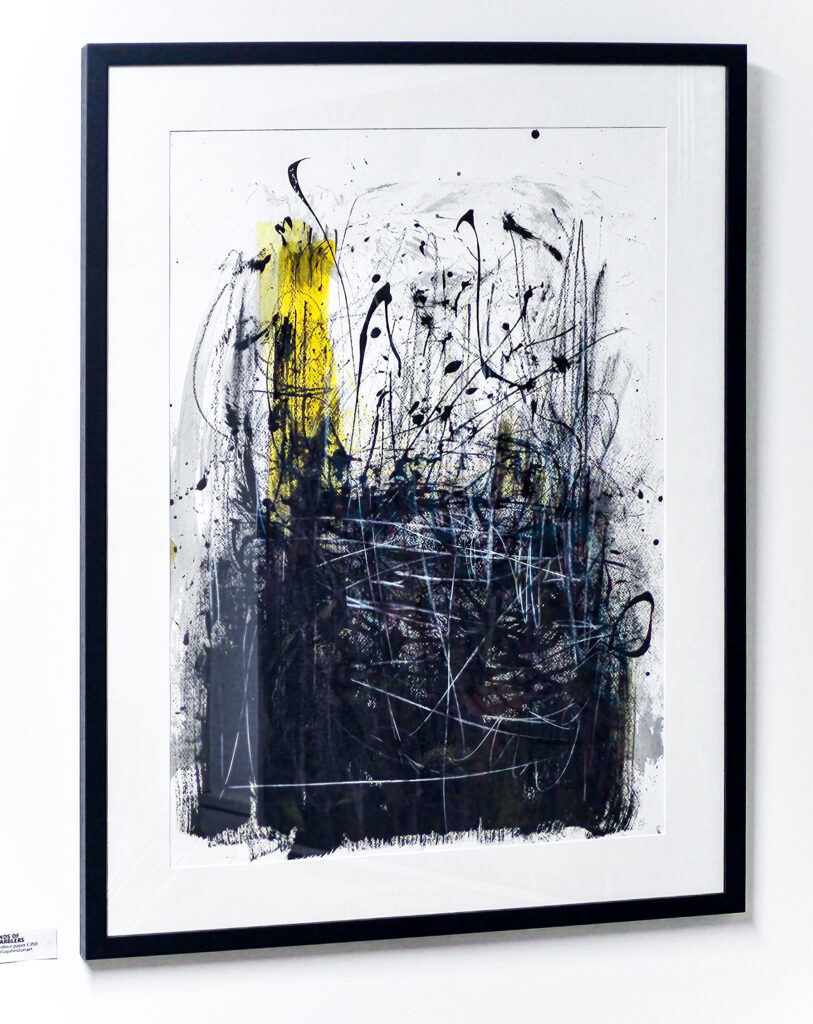
I CAN HEAR THE MUSIC TRAVEL is another remembered landscape inspired by memories of the Ferry Marsh. I wanted to reflect the drama of environment on a stormy day. The darkness of the skies, the choppiness of the water, the violence of the wind-blown reeds are all evoked here.
